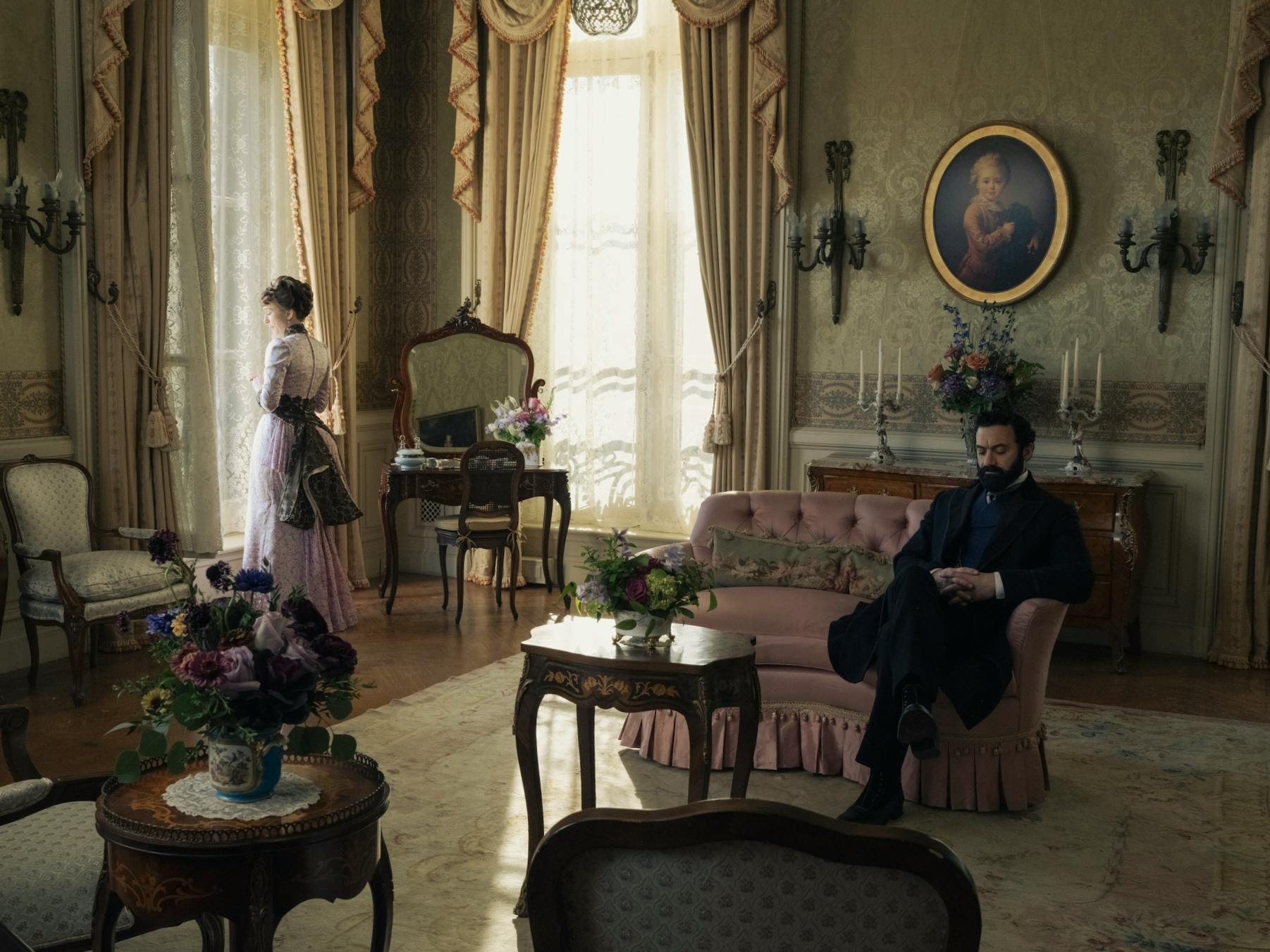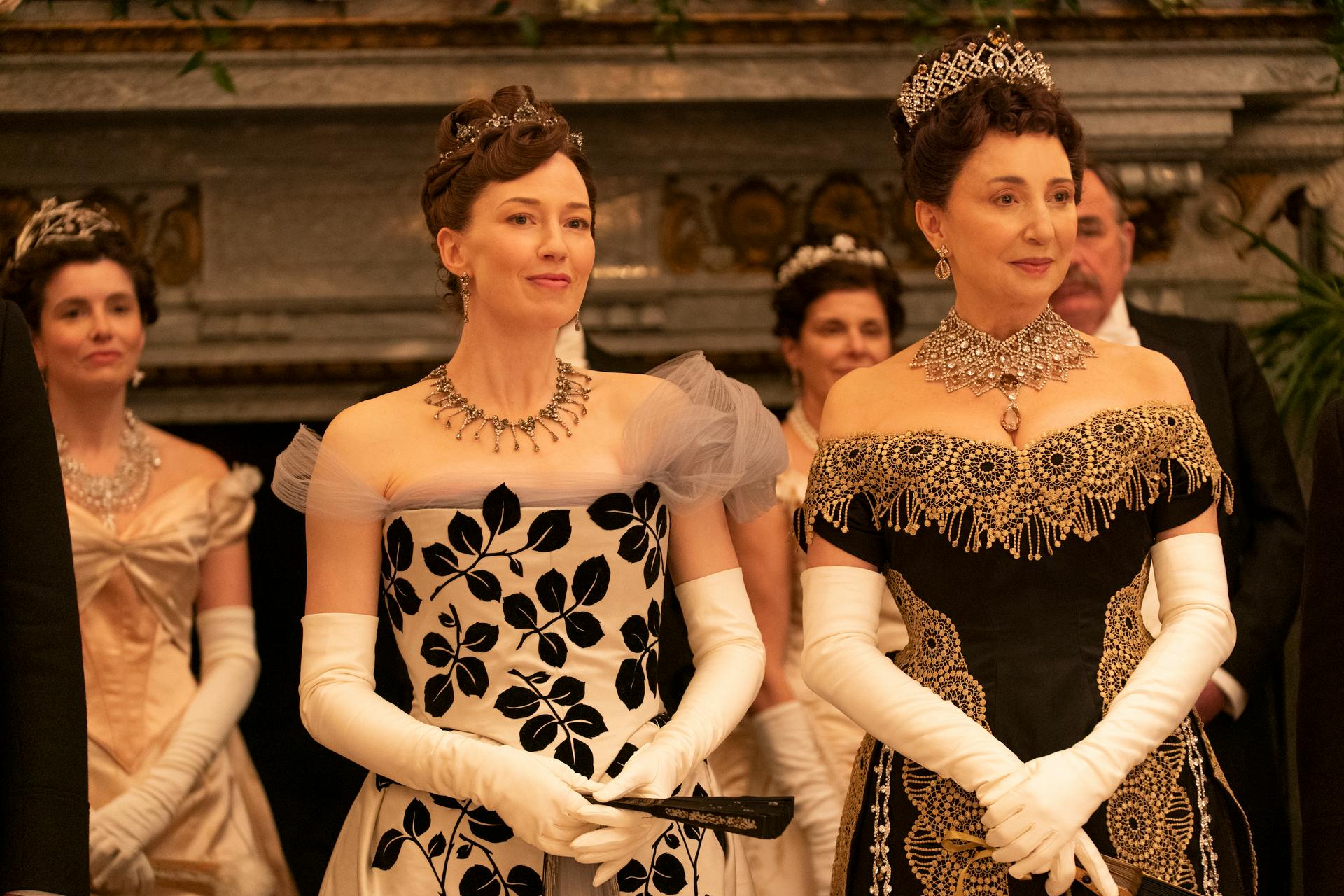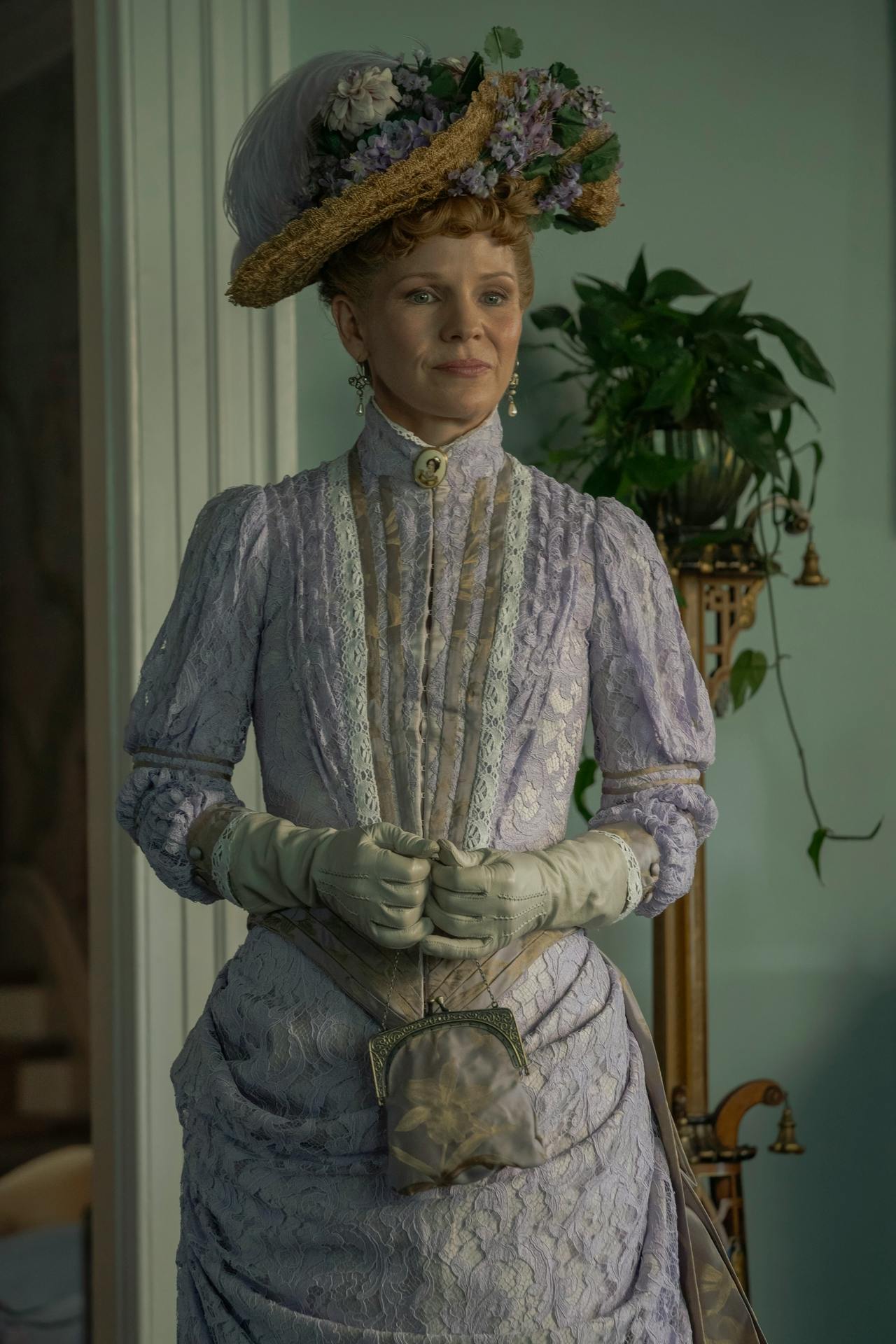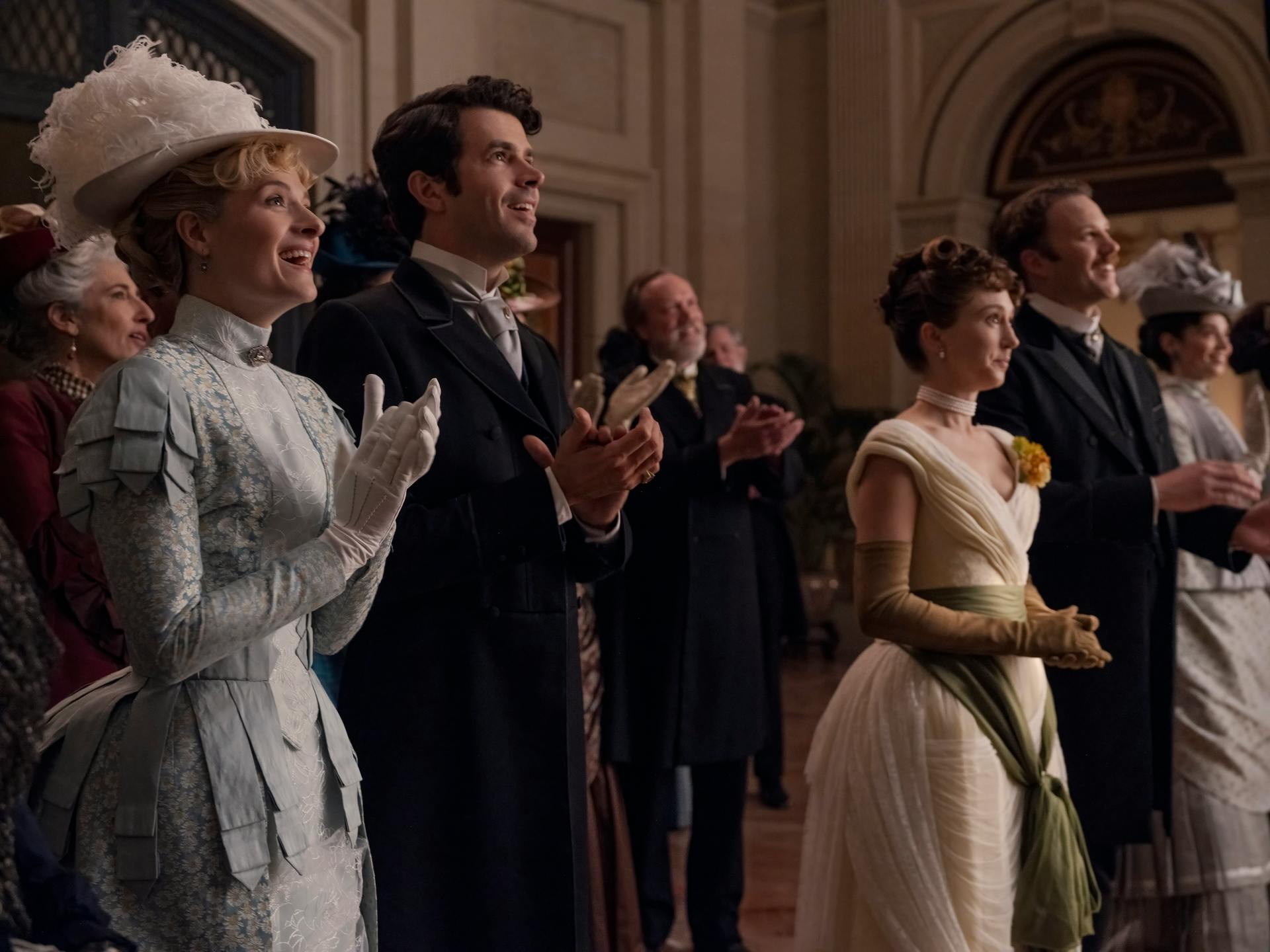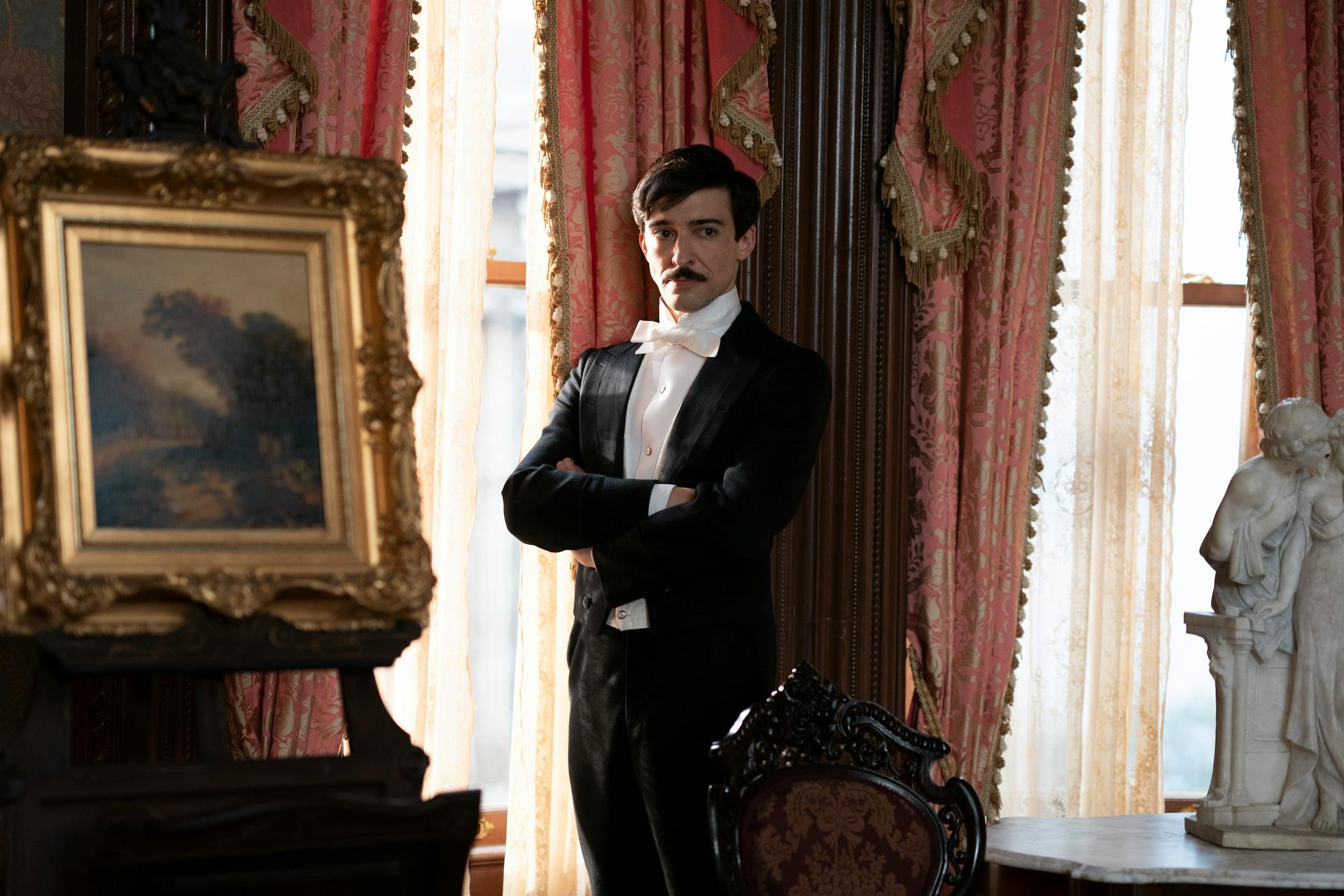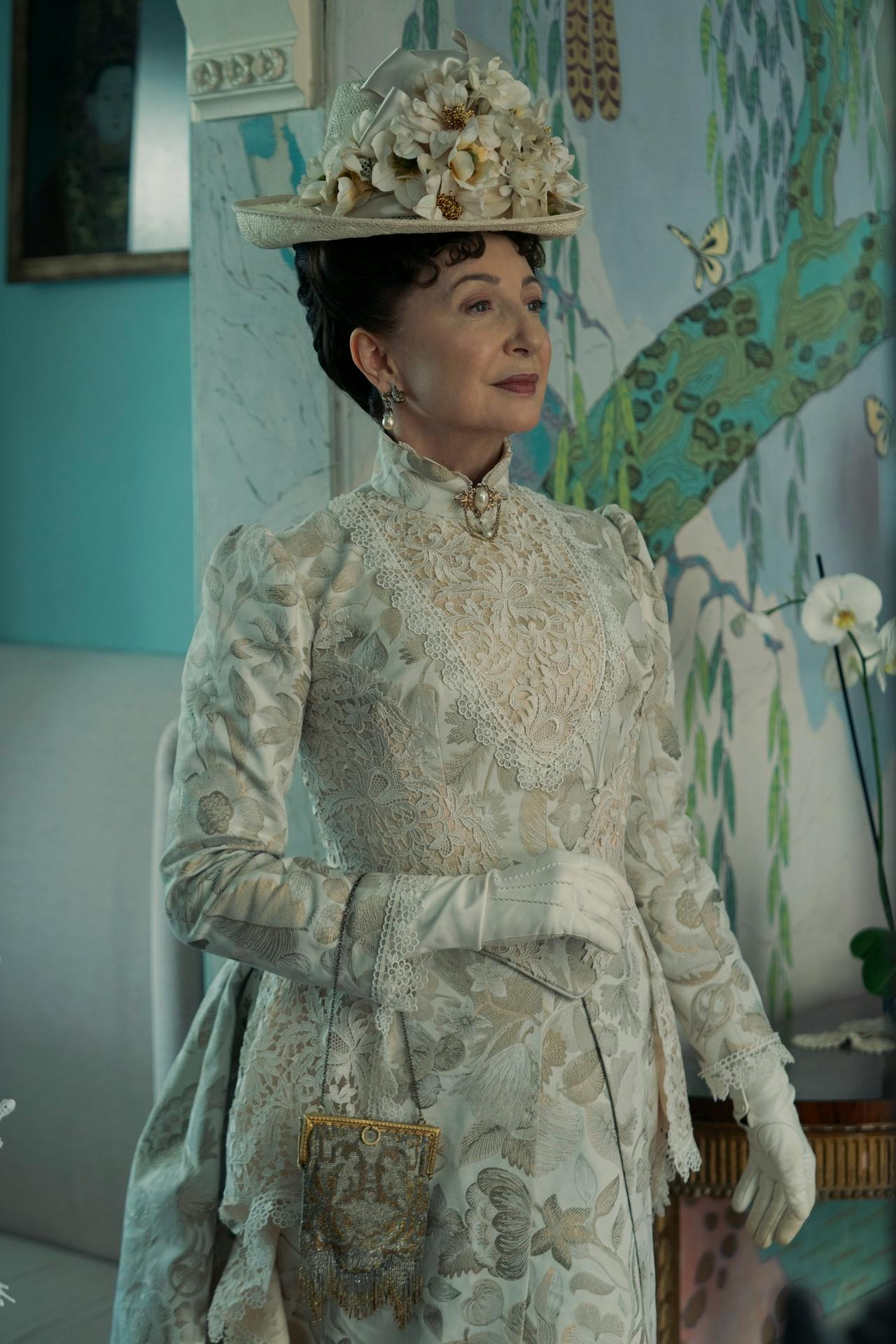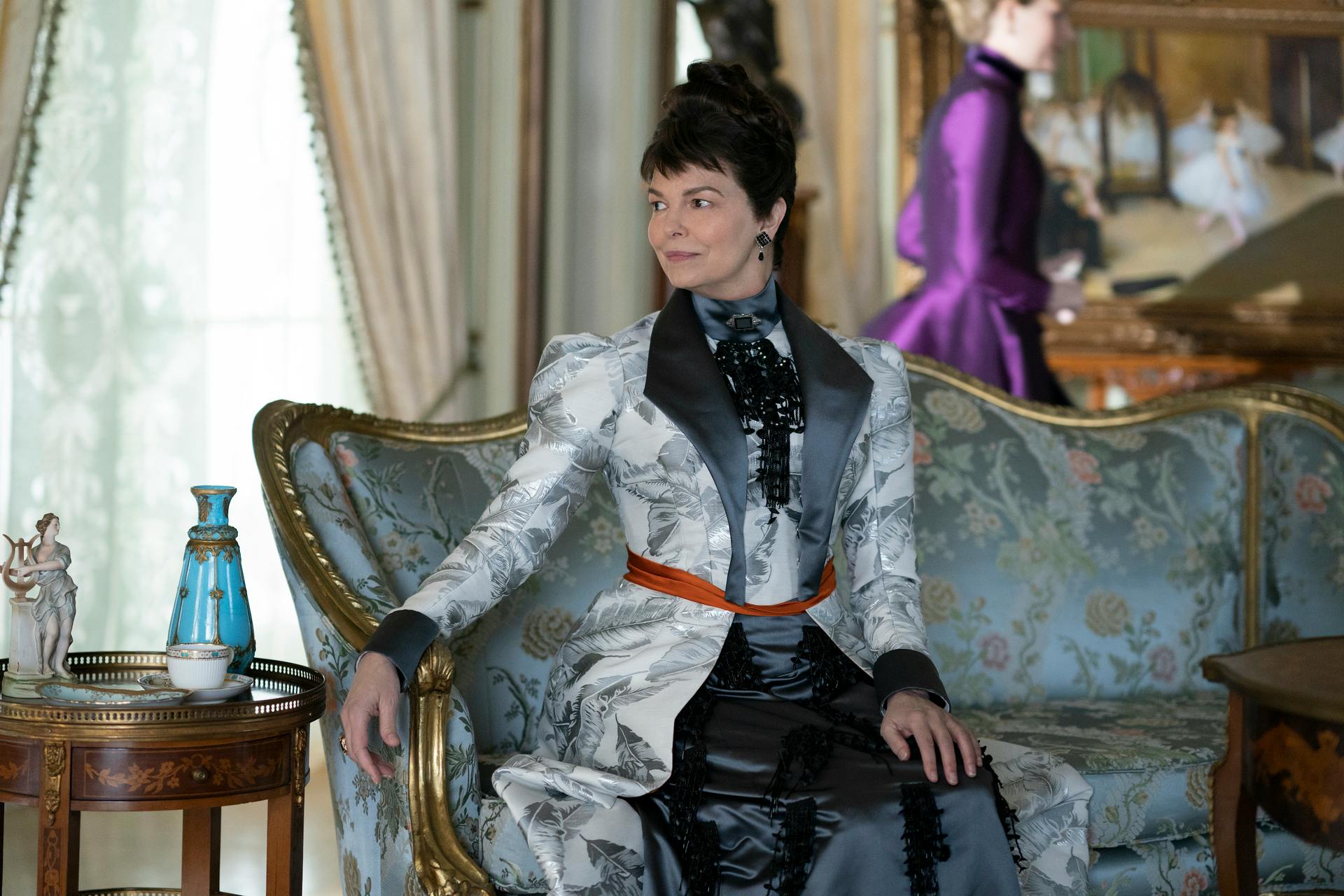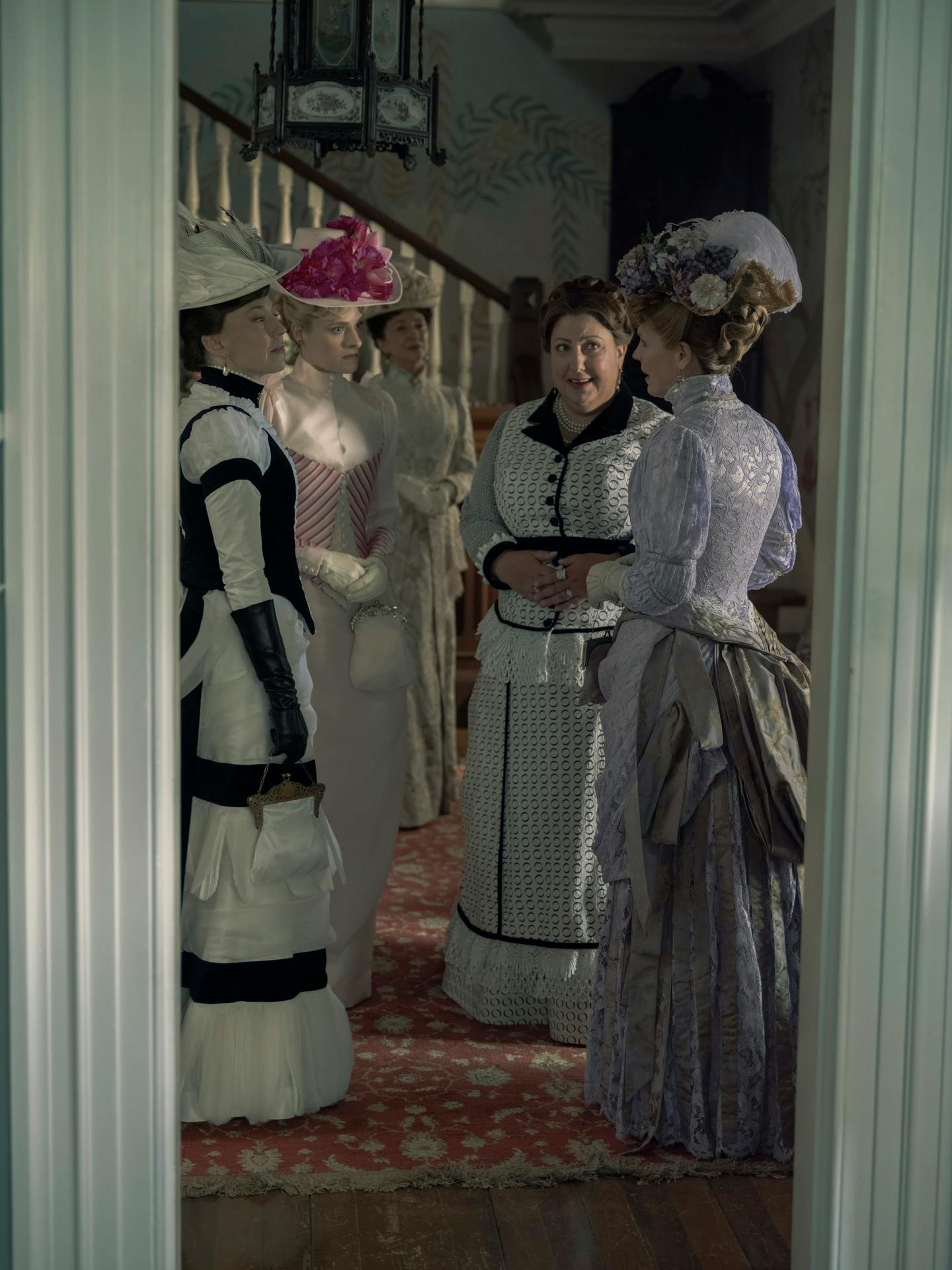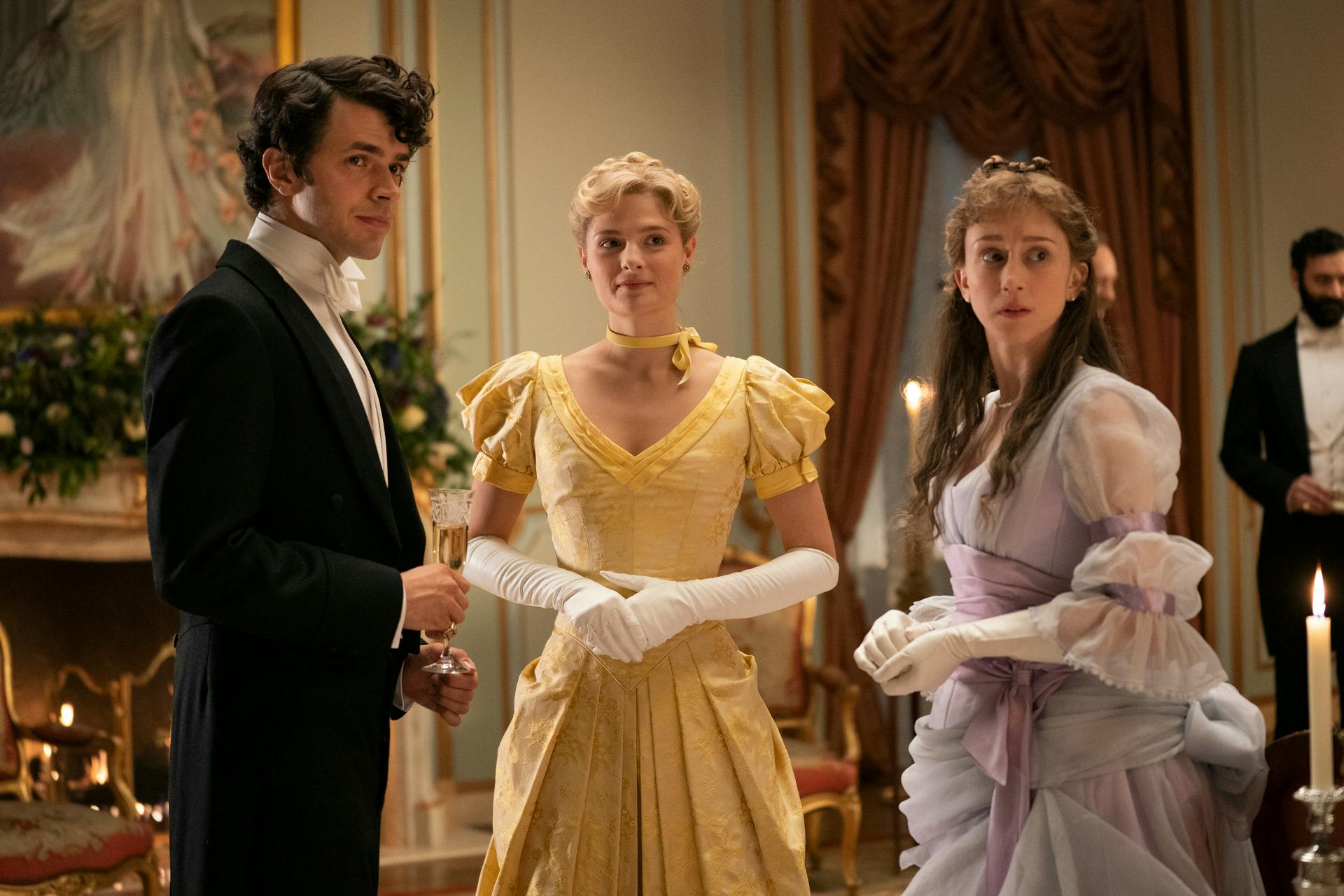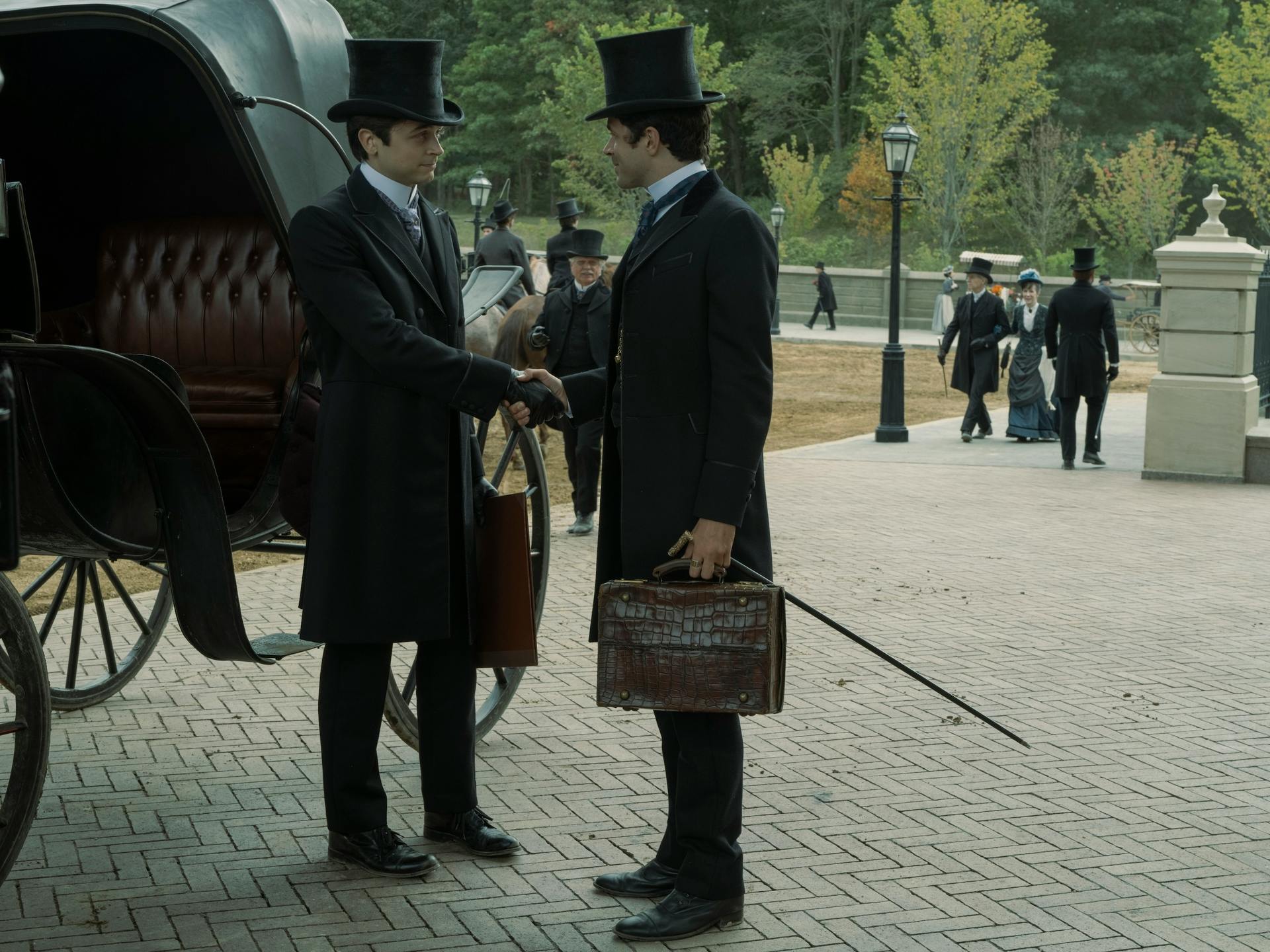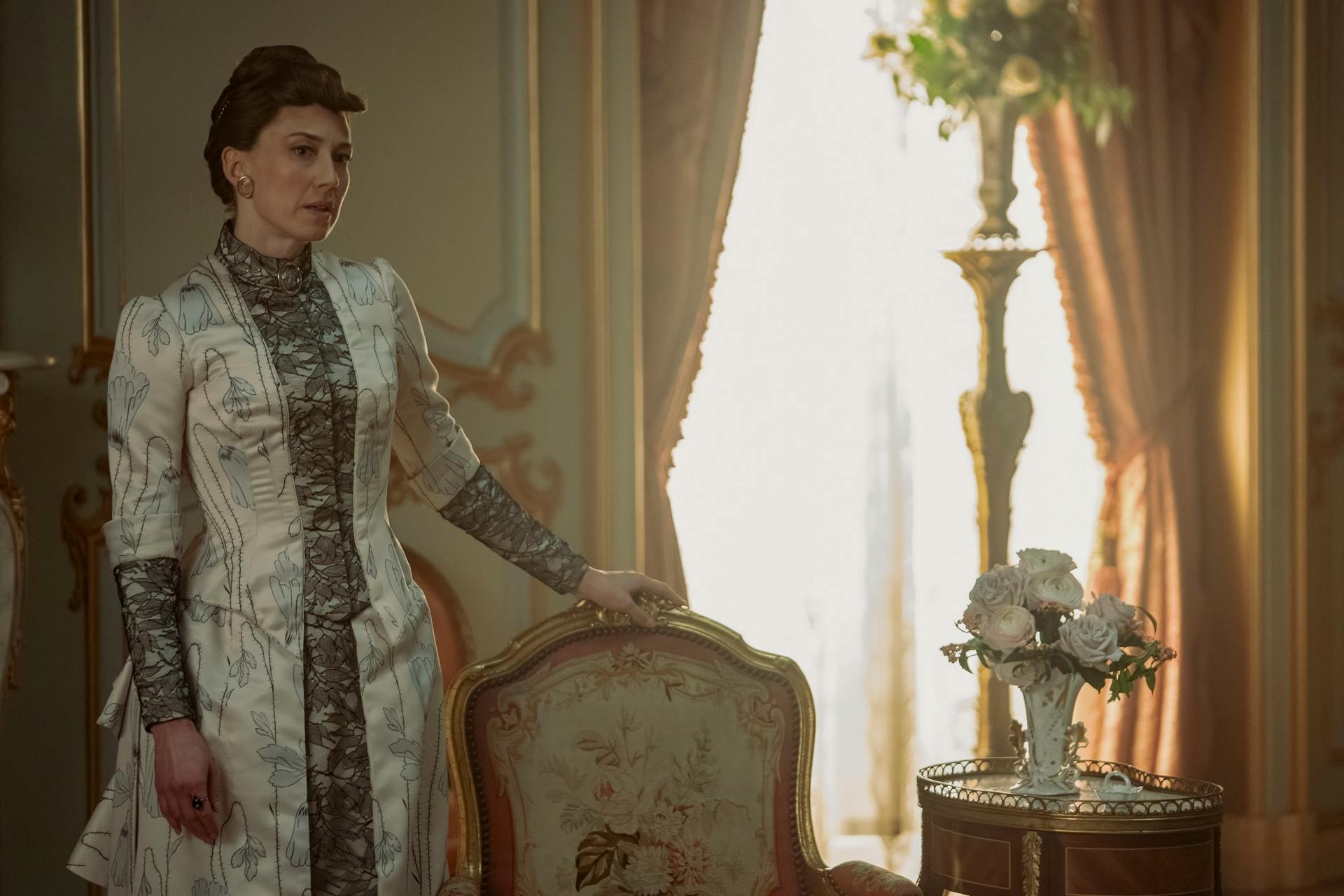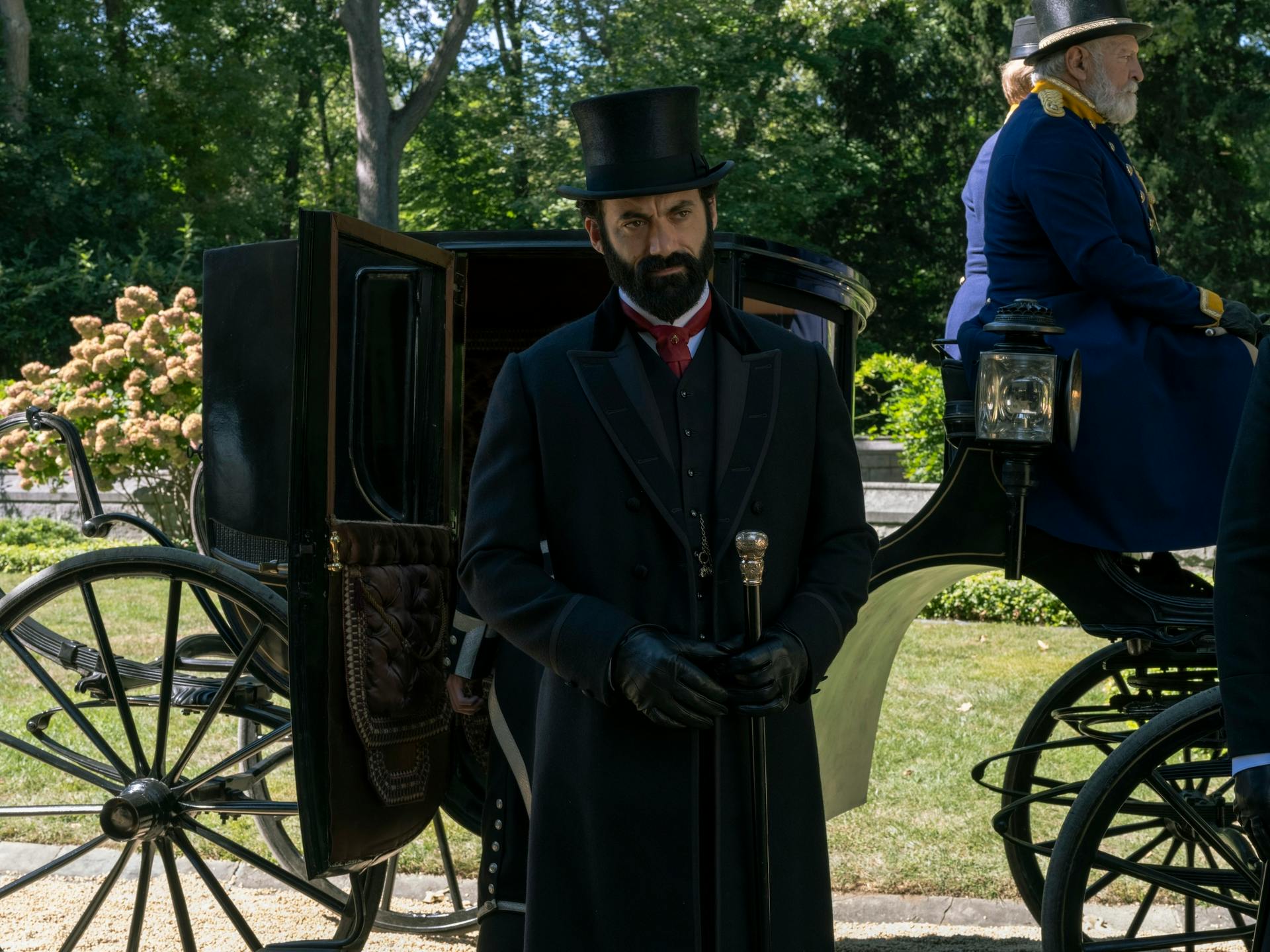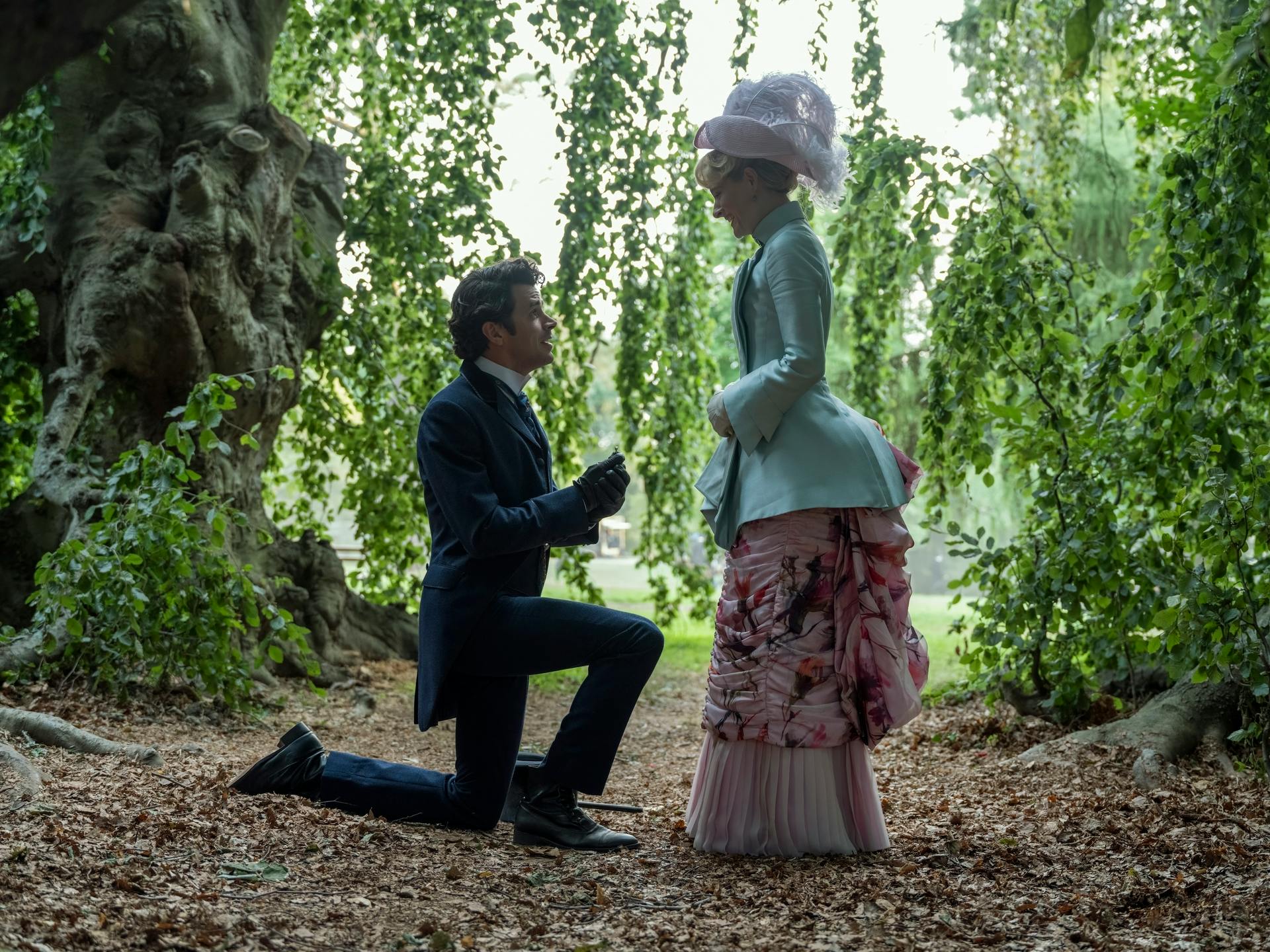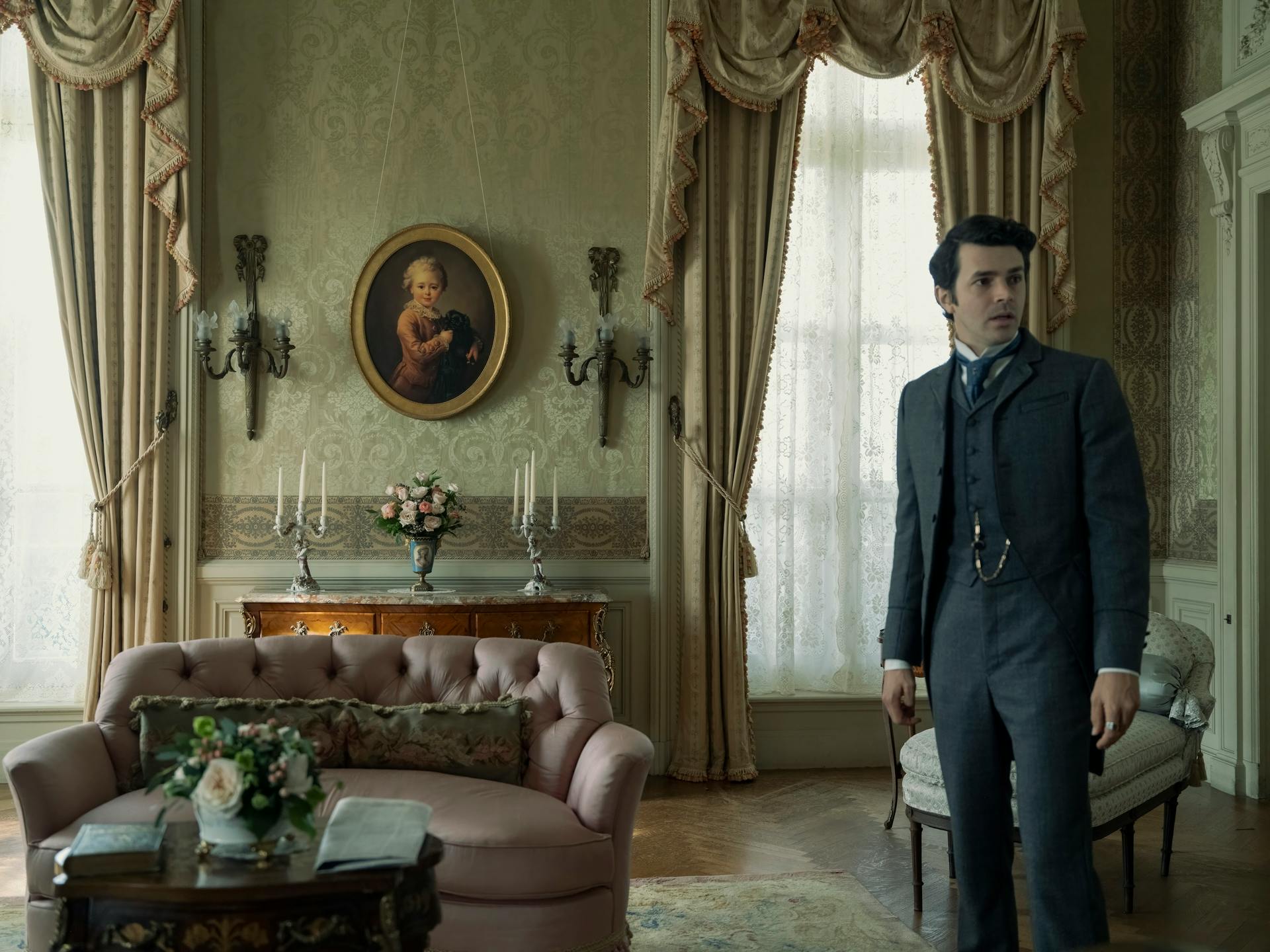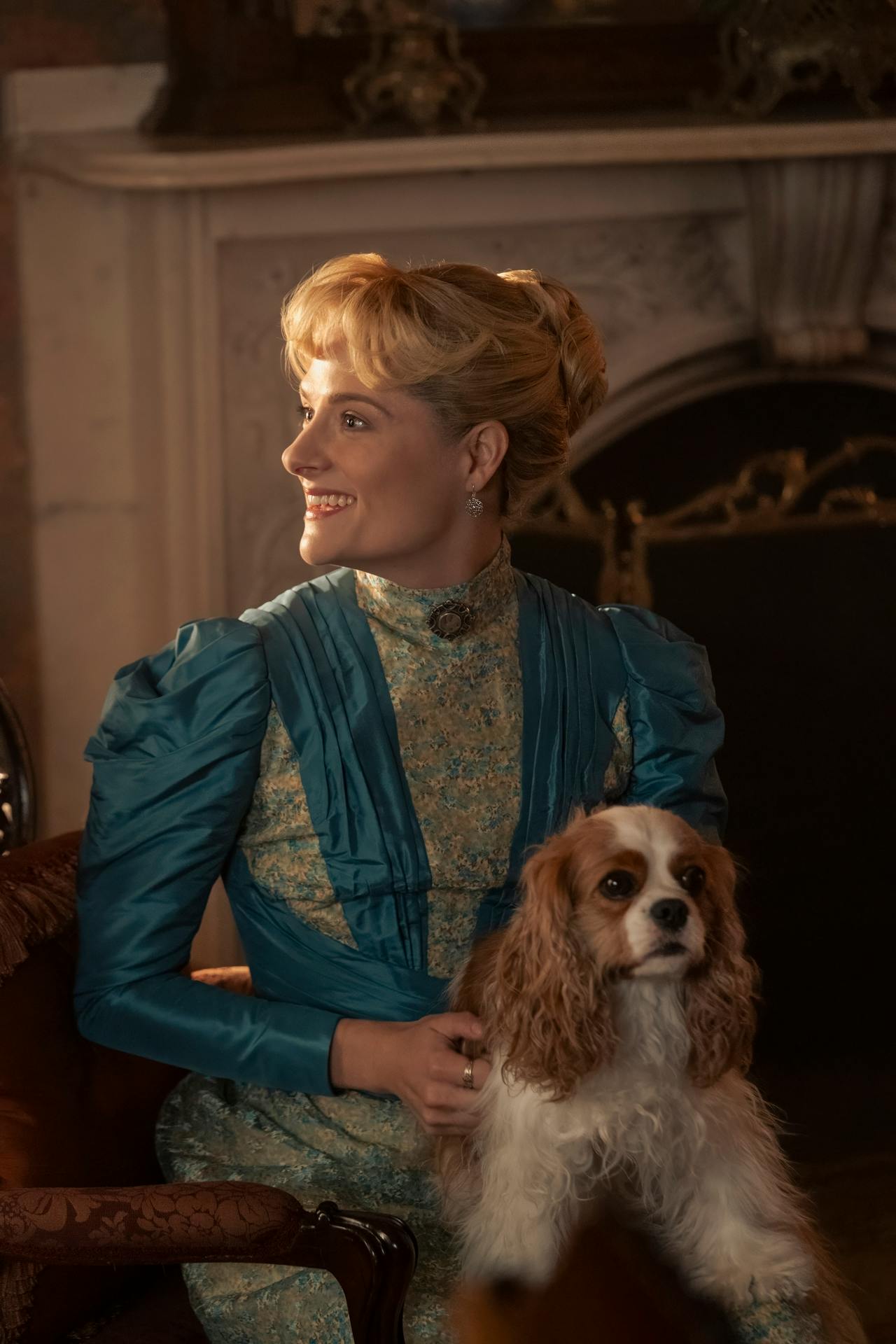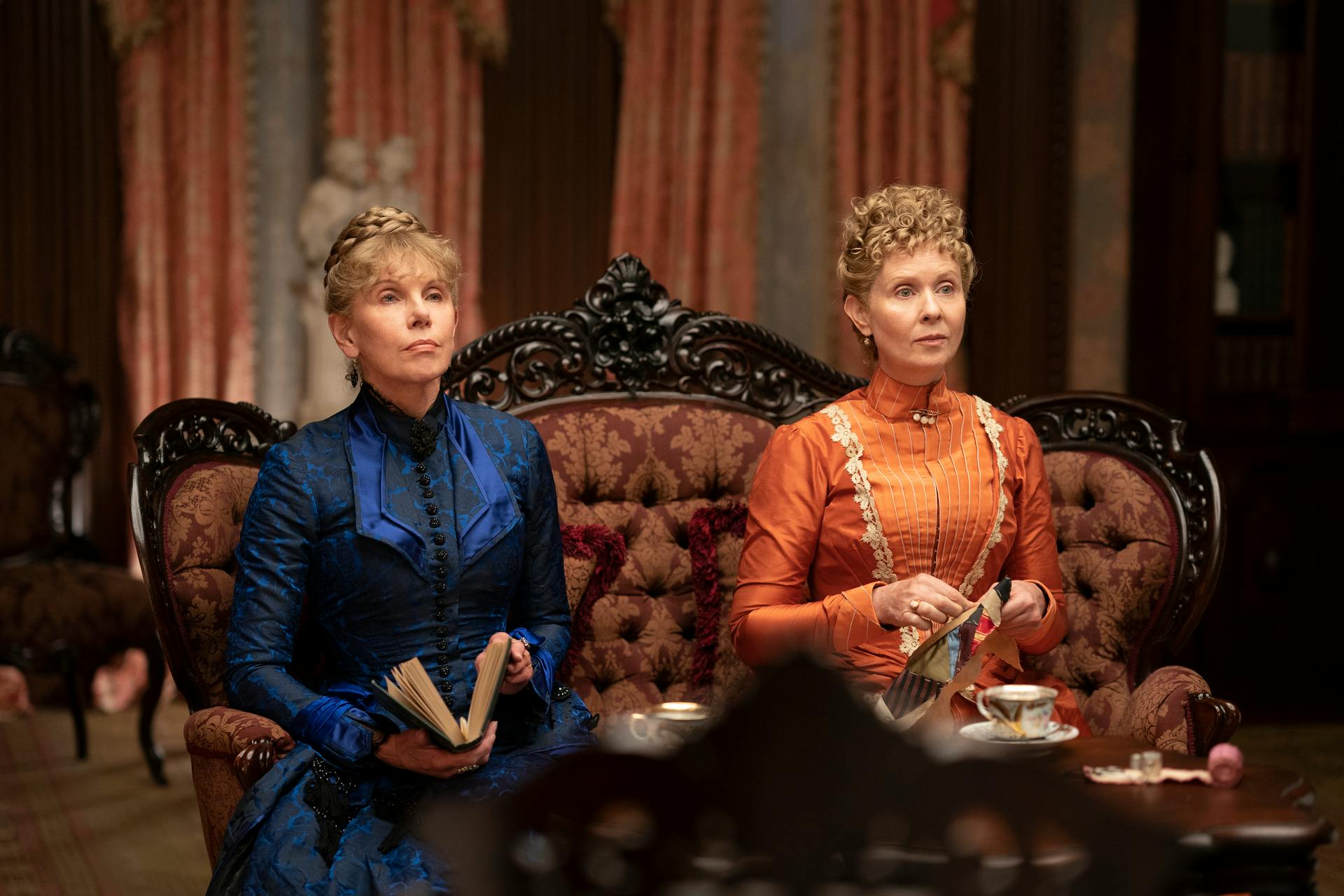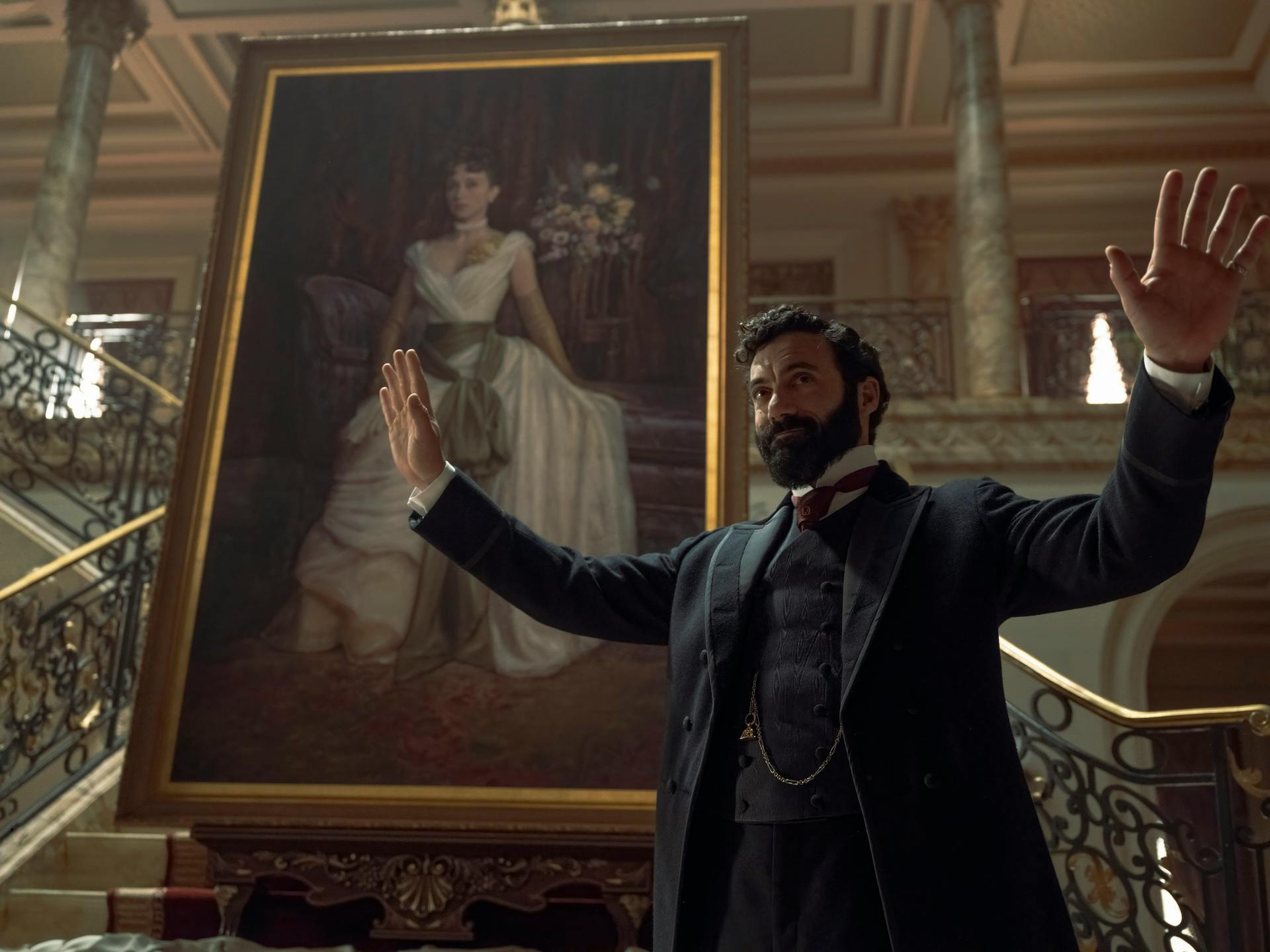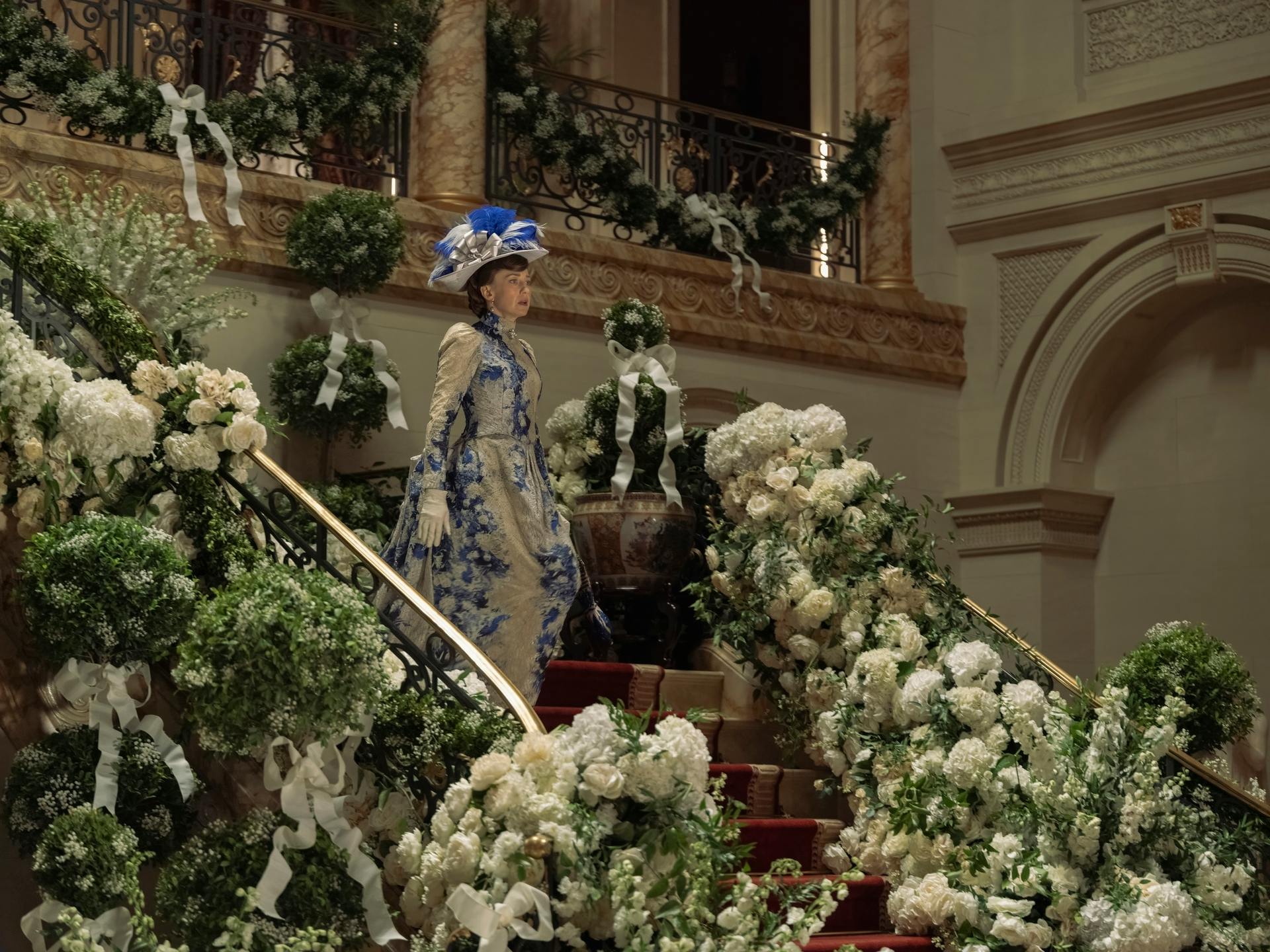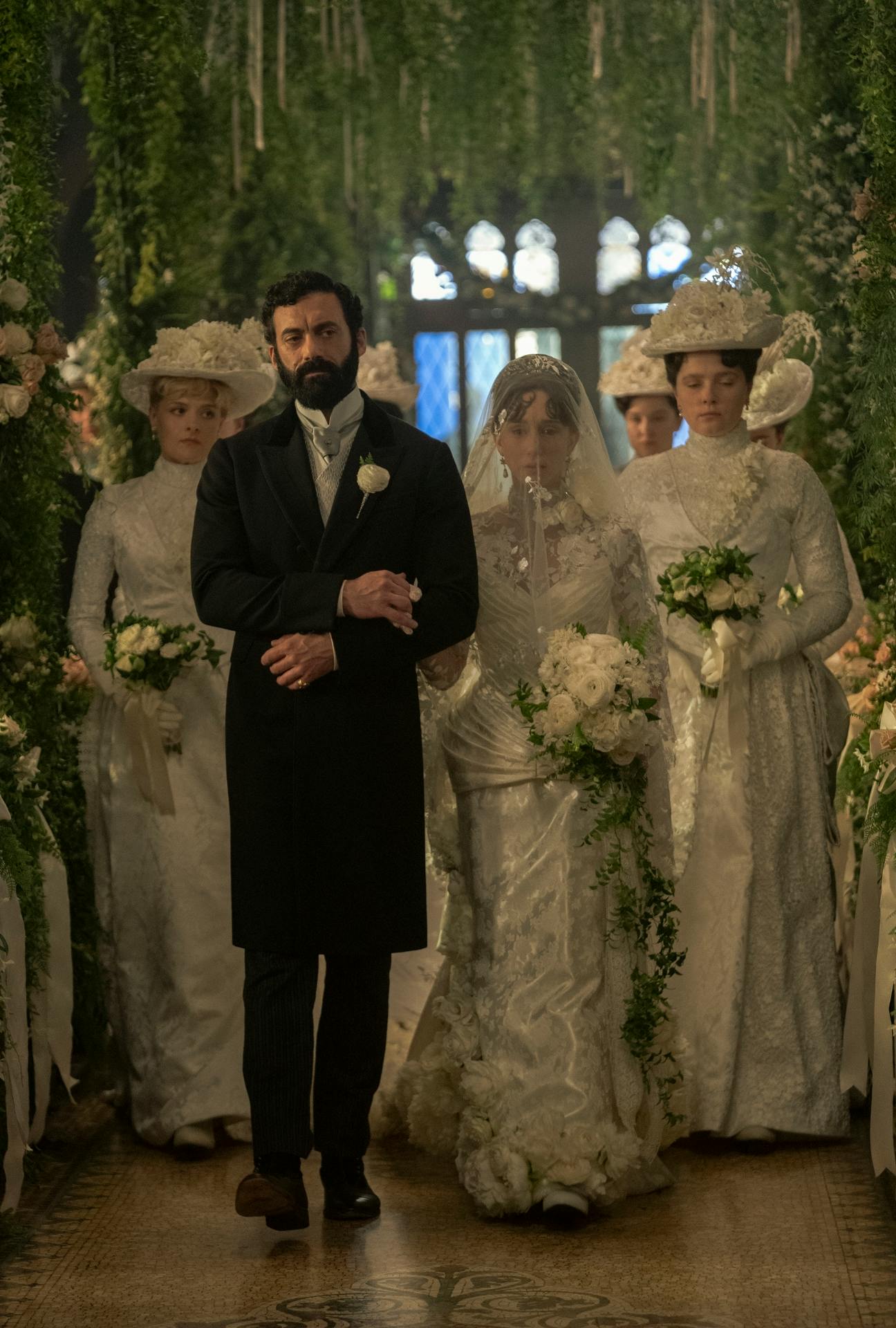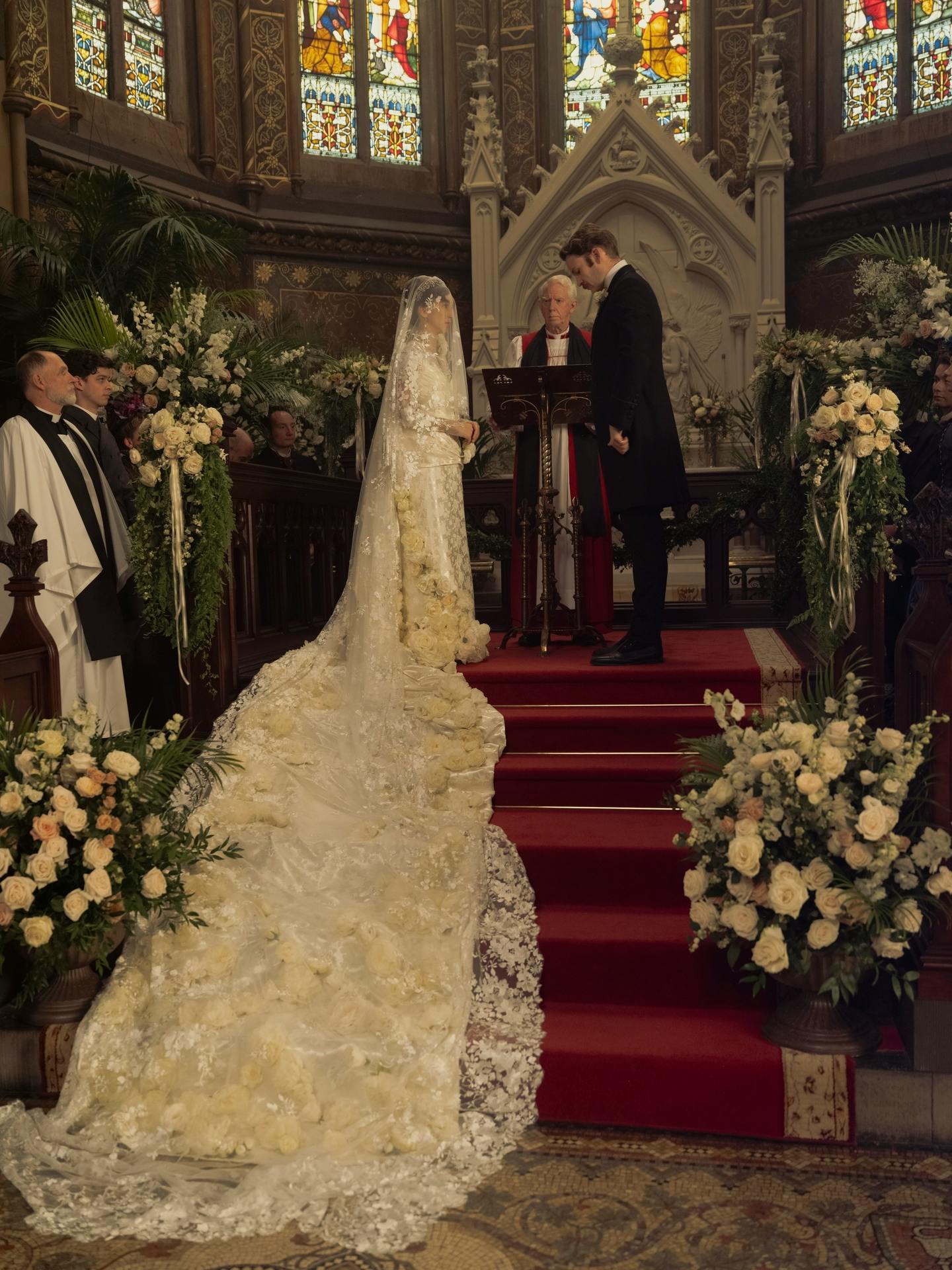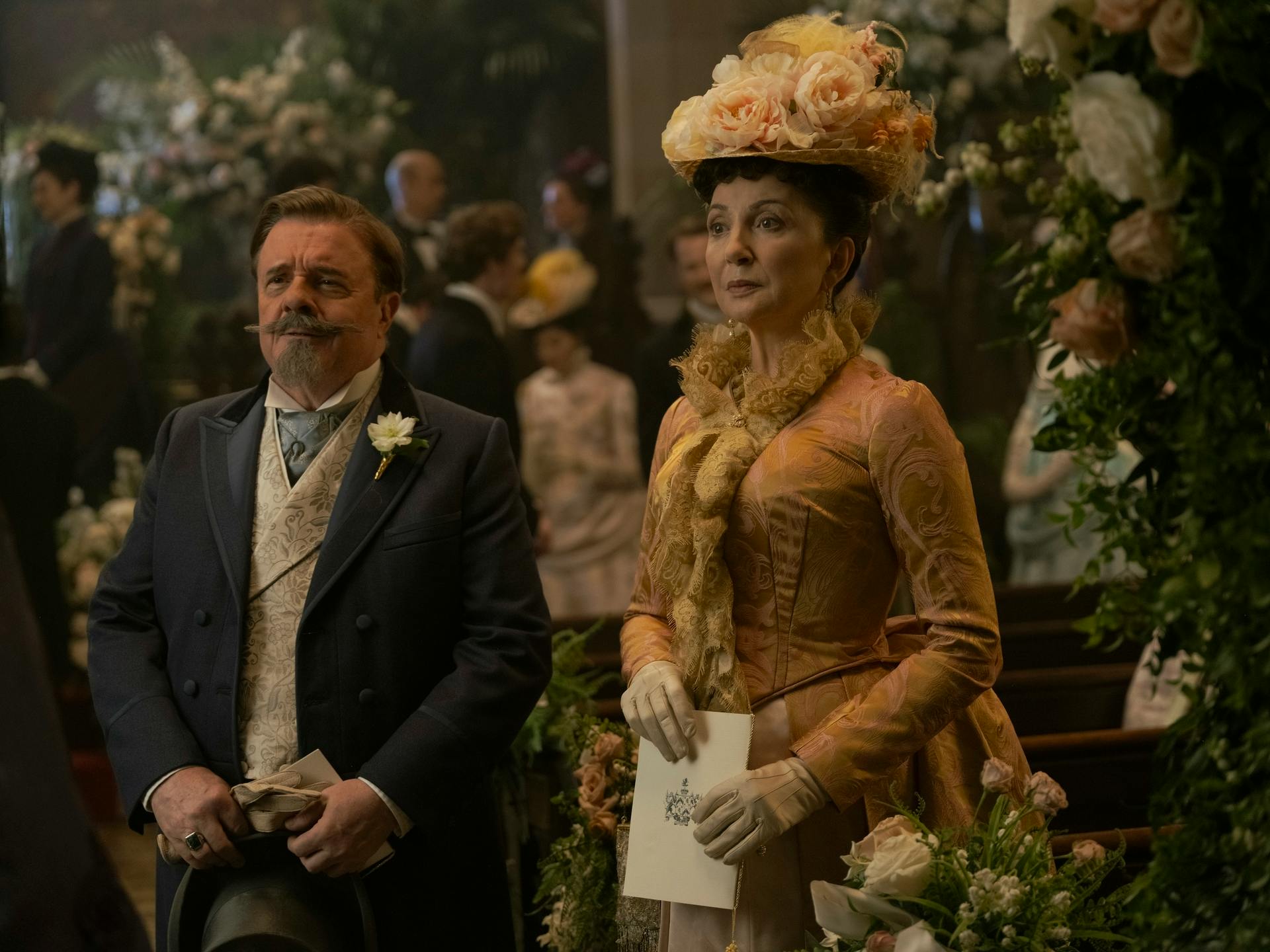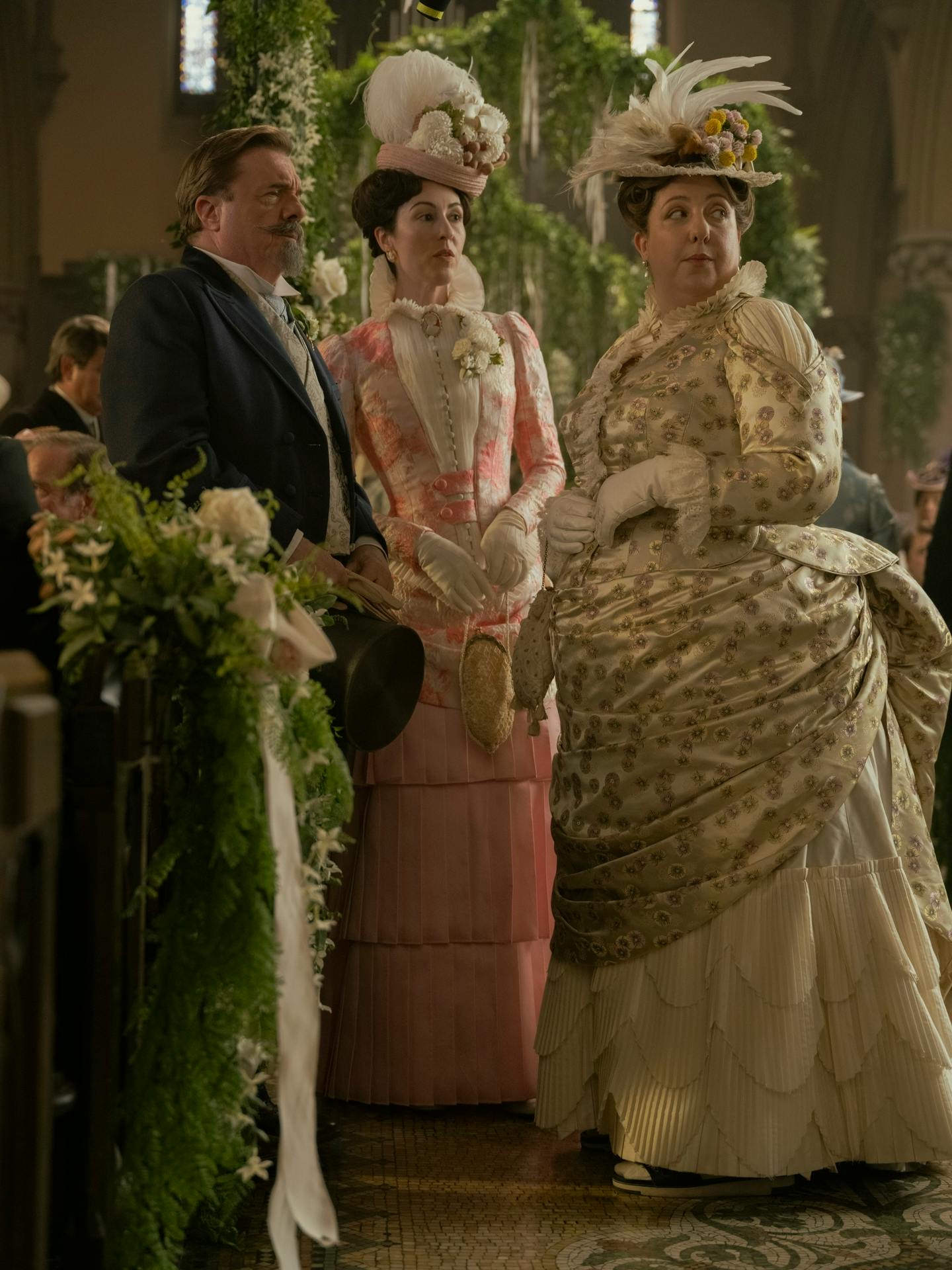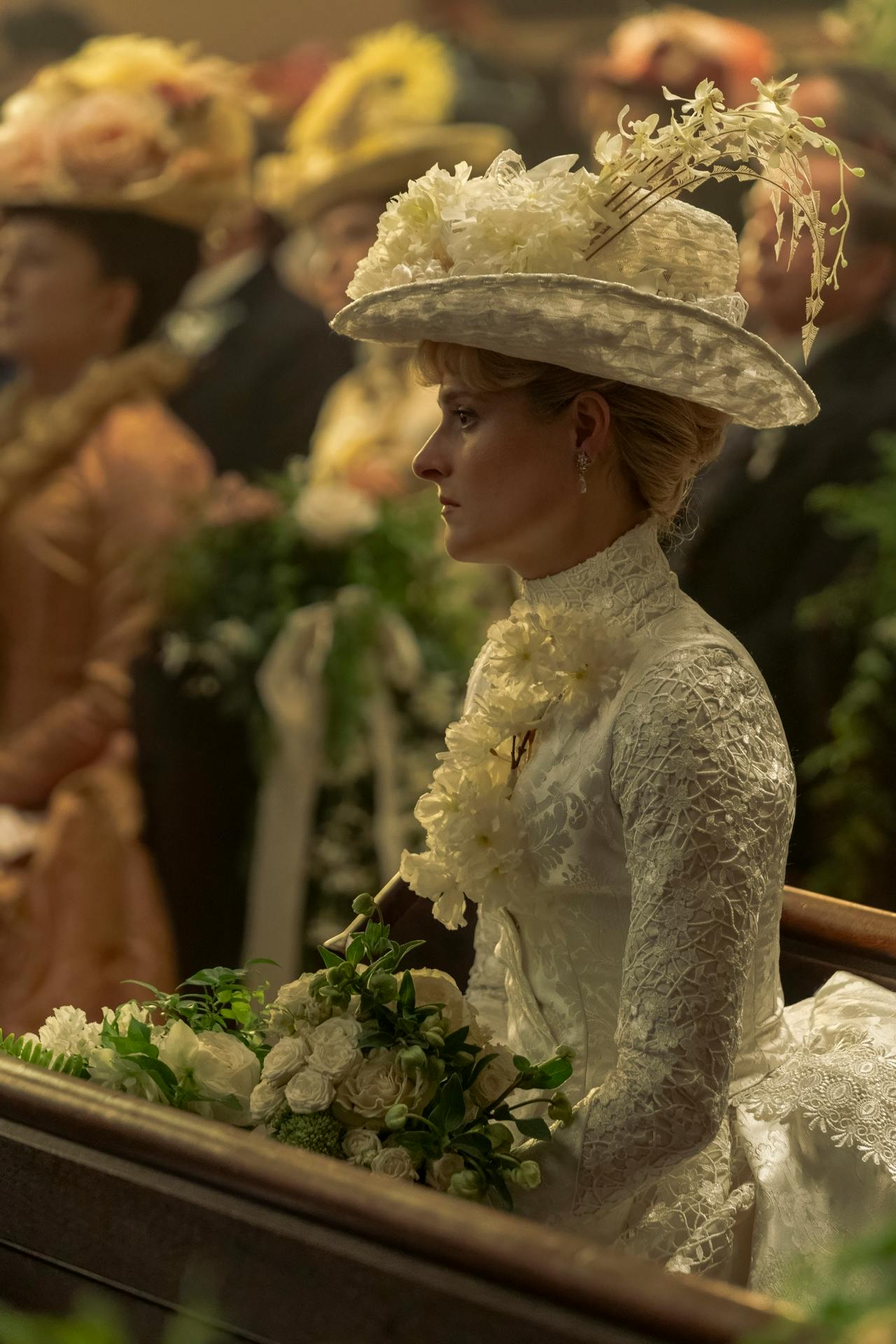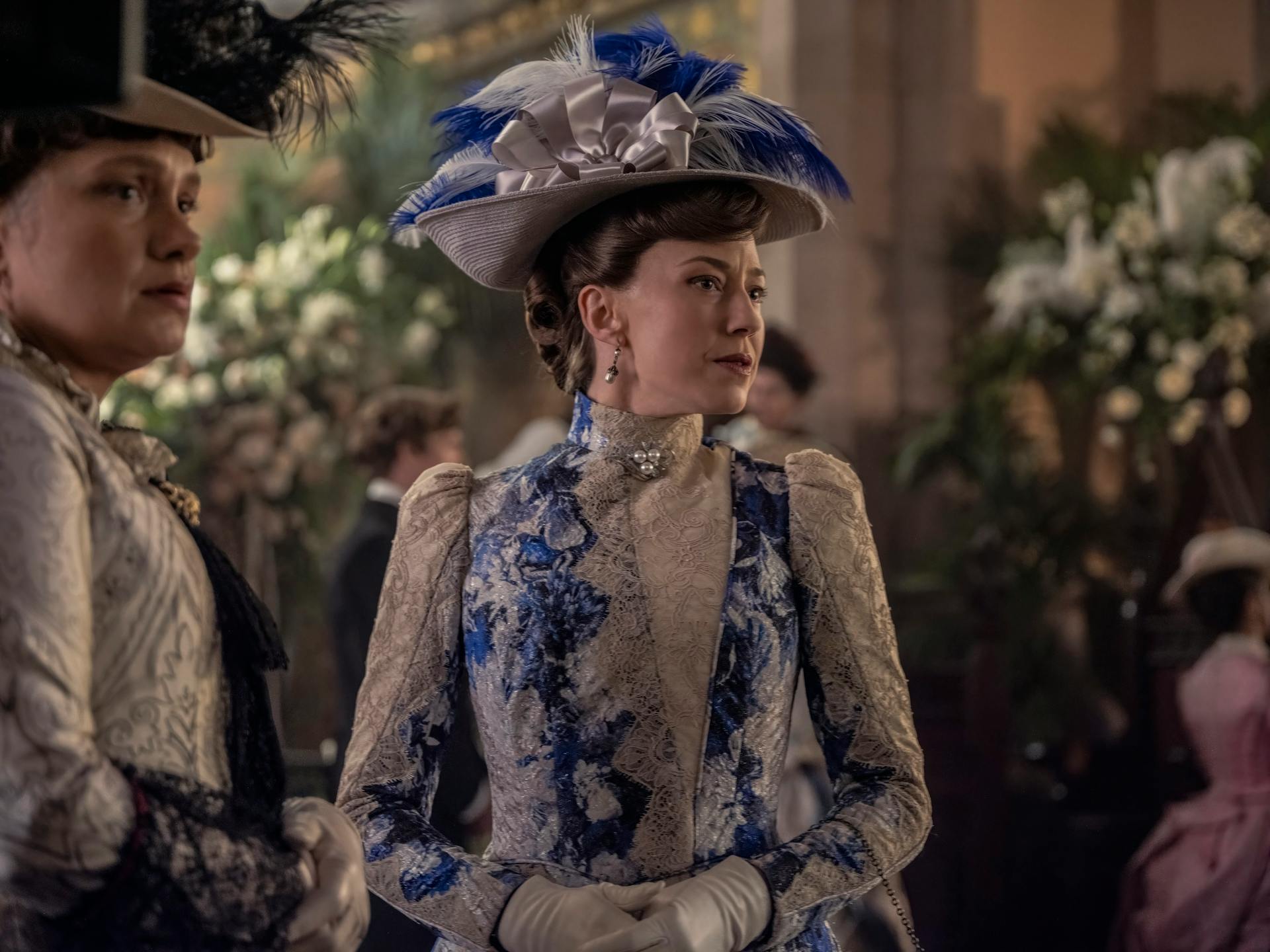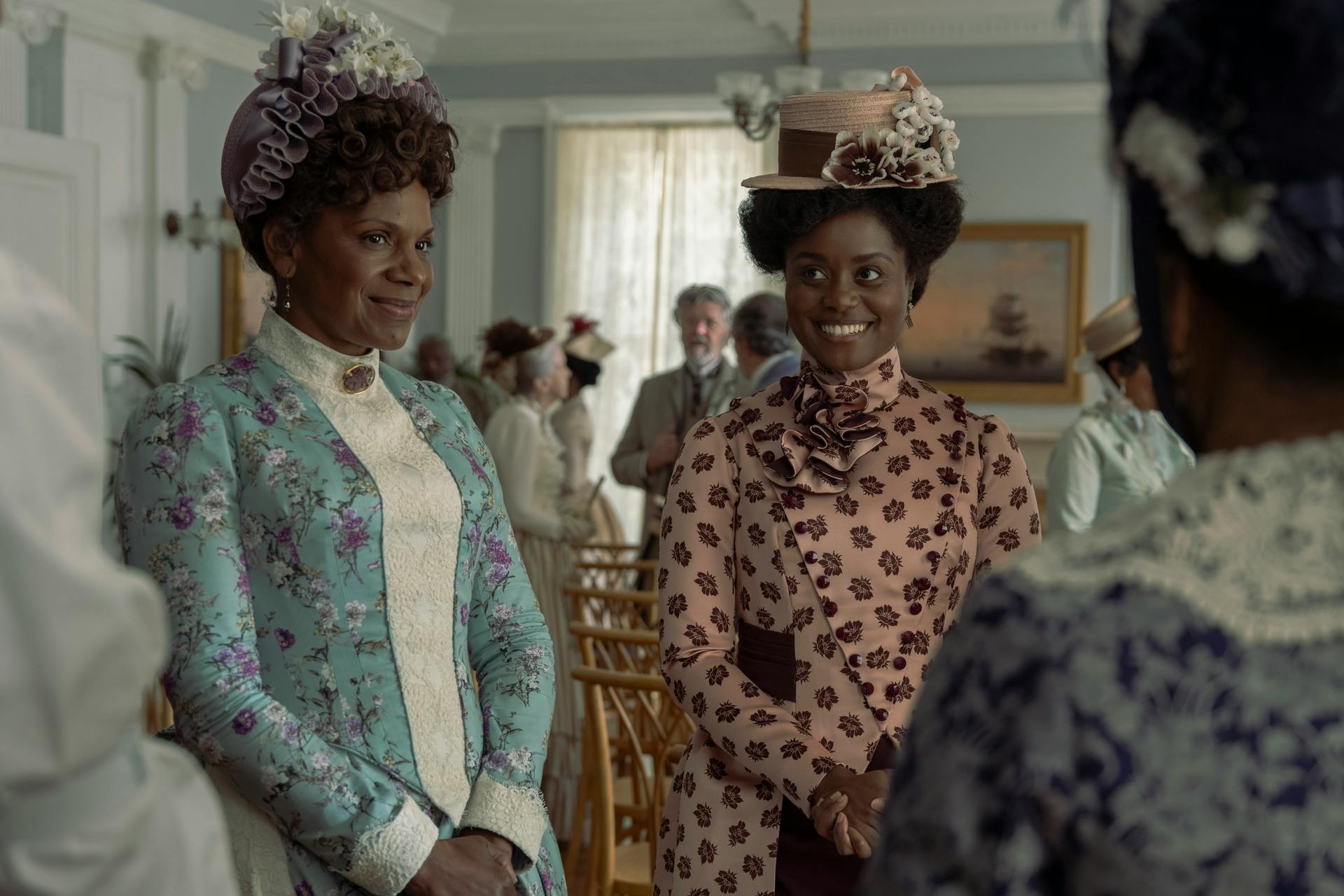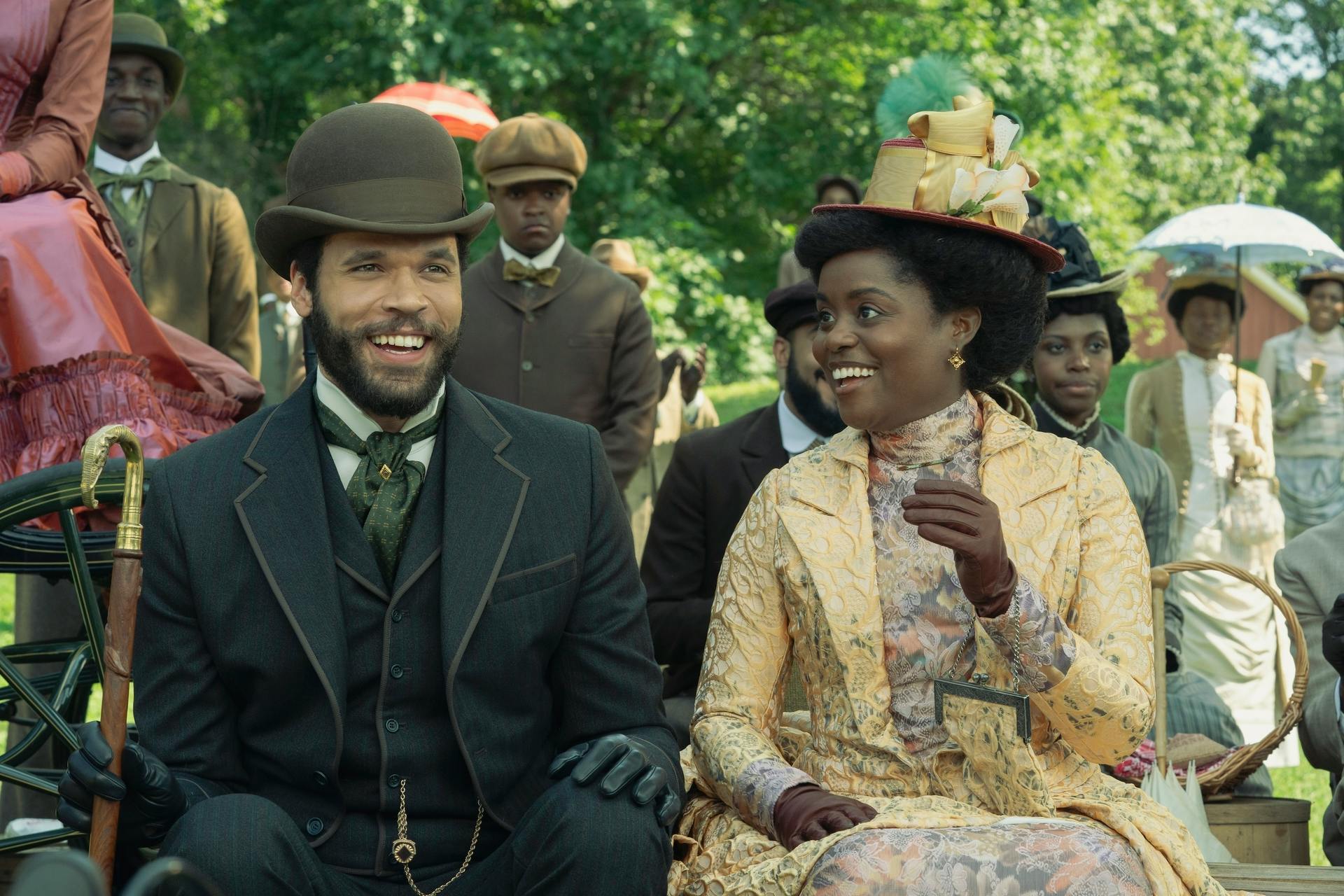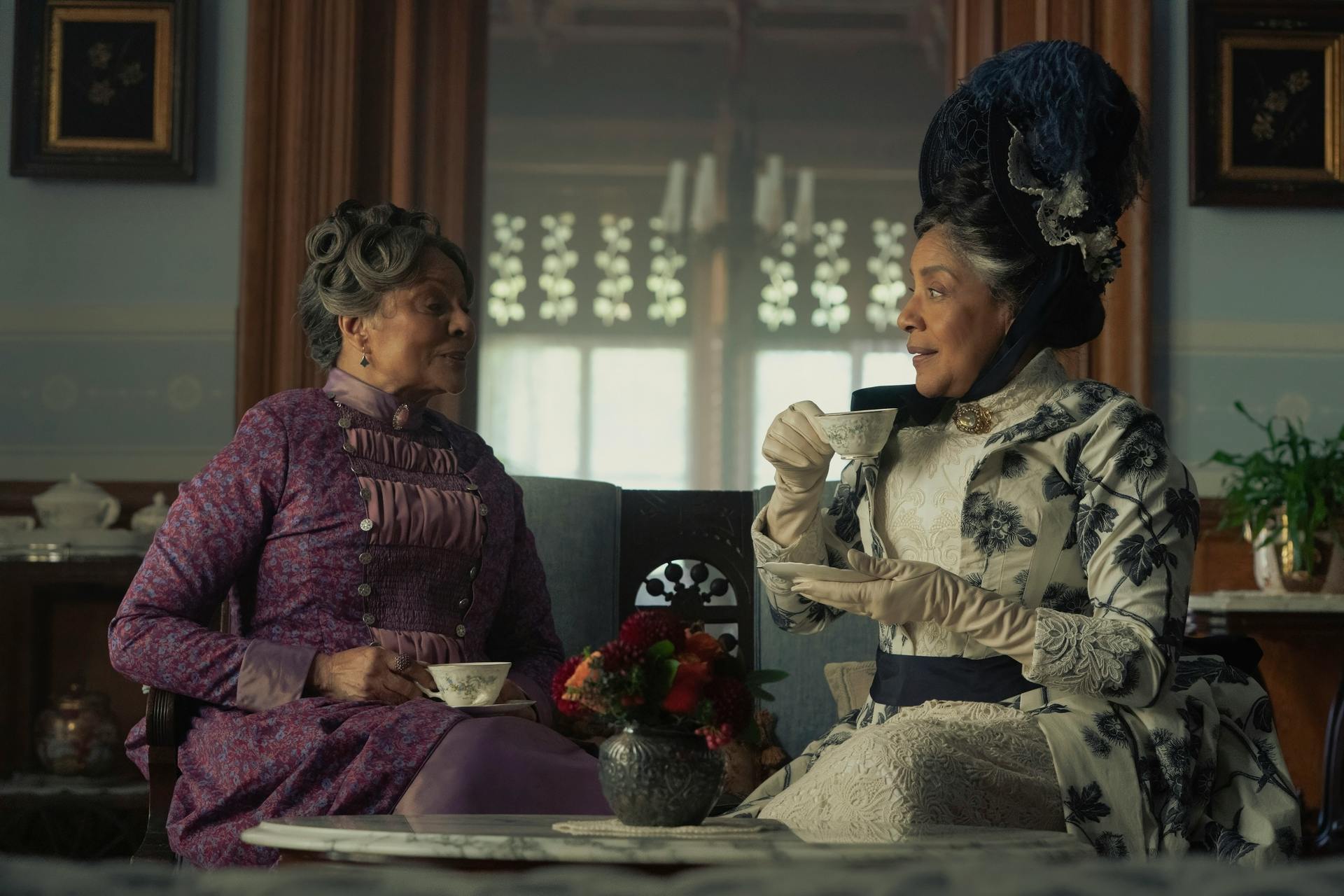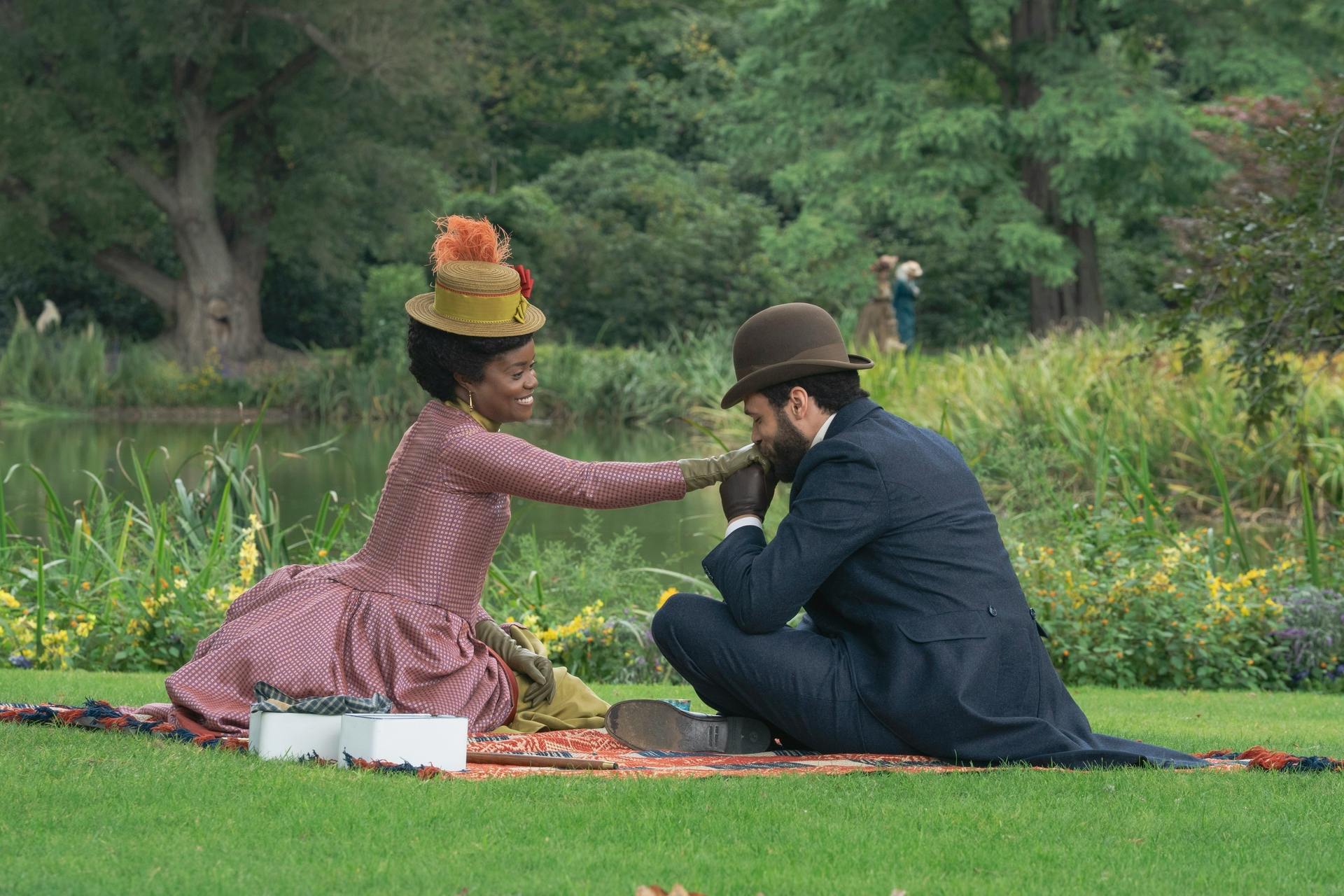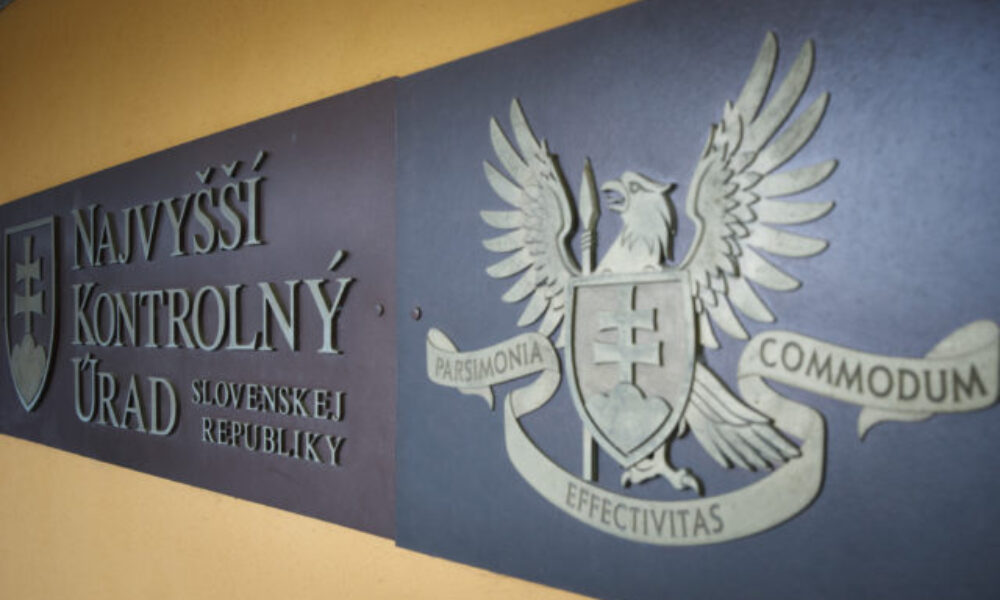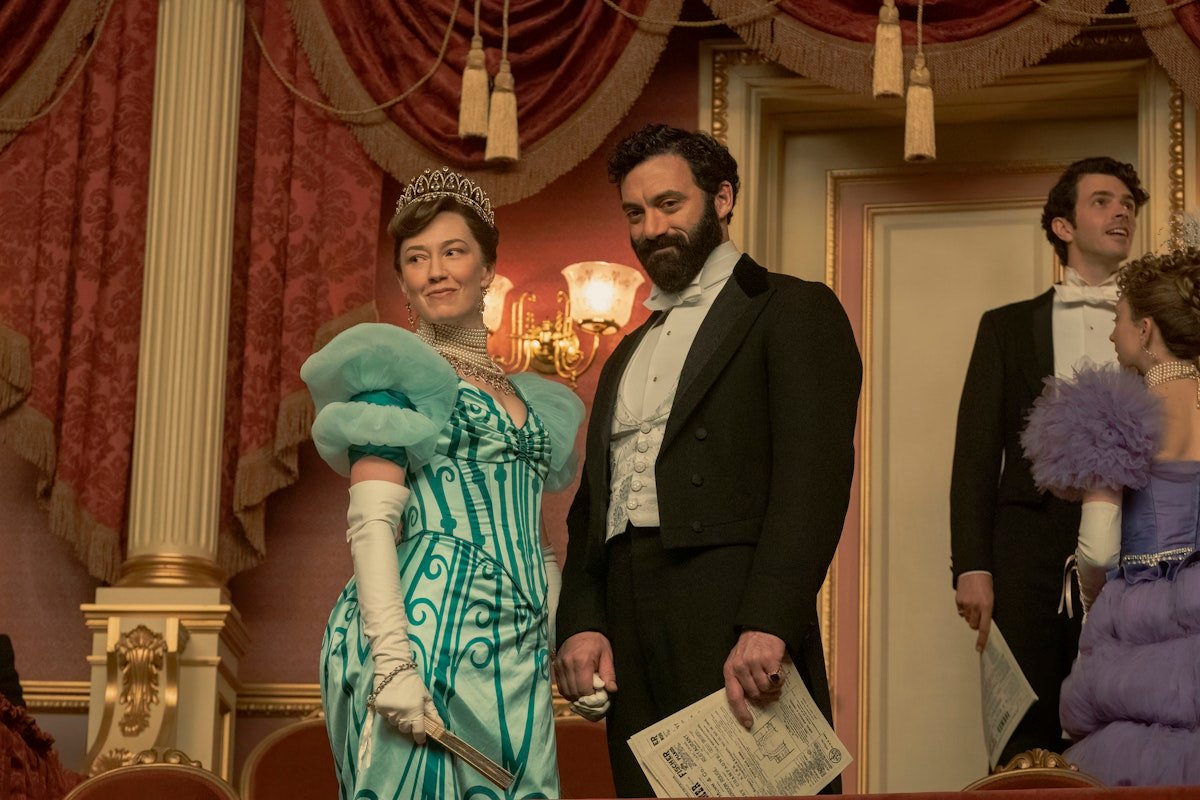
As The Gilded Age heads into its Season 3 finale this Sunday, one of its greatest triumphs—beyond the parlor politics and cliffhanger intrigue—remains its lavish, meticulously researched costume design. Created by Julian Fellowes, the mind behind Downton Abbey, and overseen by Polish-born, FIT-trained designer Kasia Walicka-Maimone, the series dresses its sprawling cast in wardrobes that feel like living artifacts of 1880s New York society. Walicka-Maimone, whose credits include Capote and A Most Violent Year, draws from the brushstrokes of John Singer Sargent, Giovanni Boldini, and James Tissot. Some of the show’s most striking looks are lifted directly from art history: Marian Brook’s pale yellow gown, inspired by Sargent’s Madame Paul Poirson (1885); Bertha Russell’s regal burgundy and ivory ensemble from Mrs. Hugh Hammersley (1892); and Gladys Russell’s luminous white portrait gown based on Boldini’s Signorina Concha de Ossa (1888).
Every choice is deliberate, down to the color palettes assigned to each character. Walicka-Maimone and her team of 65 craftspeople distinguish “old money” and “new money” through texture, color, and silhouette. Agnes van Rhijn and her sister Ada wear deep jewel tones and mustard shades, signaling tradition and unshakable dignity. Bertha Russell bursts onto the scene in vivid silvers, Parisian frills, and plumed hats designed to command attention. Gladys’s lilacs and lavenders mark her debutante status, while Marian’s bright blues and florals nod to her country upbringing. Peggy Scott’s wardrobe, rooted in research on the Black elite of the era, reflects her professional standing and growing influence. Unlike many period dramas, The Gilded Age reuses outfits and accessories, making its wardrobes feel lived-in rather than staged.
Season 3 builds on these palettes while using subtle shifts to mark character arcs. Agnes and Ada stay in their dignified colors with only slight fabric or trim variations, underscoring their resistance to change. Bertha’s palette grows bolder, pairing her silvers with jewel-bright greens and yellows that signal her dominance. Gladys’s lilacs soften into romantic pastels as she approaches marriage, while Marian’s colors grow more muted and tailored, aligning her with the upper circles she’s slowly joining.
In the real Gilded Age, clothing was social currency. Old-money families favored deep, conservative tones and heavy silks to signal lineage and stability, while new-money social climbers embraced Parisian fashions, brighter synthetic dyes, and extravagant accessories to broadcast their arrival. Even hats carried coded messages: the more elaborate, the higher a woman’s perceived rank. The show’s real-life inspirations embodied these rules: Mrs. Astor in opulent but dignified gowns, Aurora Fane in delicate pastels, and Mamie Fish in theatrical trims and audacious silhouettes.
For men, tailoring served the same function. Ward McAllister, the real-life social gatekeeper, is dressed to reflect both his authority and flair, with immaculate white tie, silk waistcoats, and polished accessories. Old-money gentlemen like Oscar van Rhijn favor understated three-piece suits in muted wool, their refinement visible in cut and fit rather than color. By contrast, new-money magnates like George Russell choose glossier fabrics, bold waistcoats, and gold watch chains, clear signals of financial power.
Season 3 leans even further into this dynamic, using costumes to mirror shifting alliances and rising stakes. Gladys’s wedding to a British aristocrat brought one of the series’s most intricate creations: a gown based on Consuelo Vanderbilt’s real-life wedding dress, requiring six weeks to make. Bertha’s social conquests have been punctuated by jewel-bright gowns in striking color combinations, like the vivid green-and-yellow pairings Walicka-Maimone calls “Bertha’s color.” Marian’s dresses edge toward her peers’ sophistication, while Peggy’s wardrobe embraces richer textures and elaborate hats as her influence grows. Among the men, George Russell’s suiting has become sharper and more imposing, while Oscar’s attire now features daring flashes of color.
Where other period dramas, like Netflix’s Bridgerton, reimagine history with fantastical flourishes, The Gilded Age thrives on authenticity without sacrificing spectacle. As the season hurtles toward its finale, after weddings, scandals, and seismic shifts in New York’s social order, the costumes remain as integral to the storytelling as any plot twist. In the battle between old and new money, clothes are never simply adornment—they are the currency of status.
